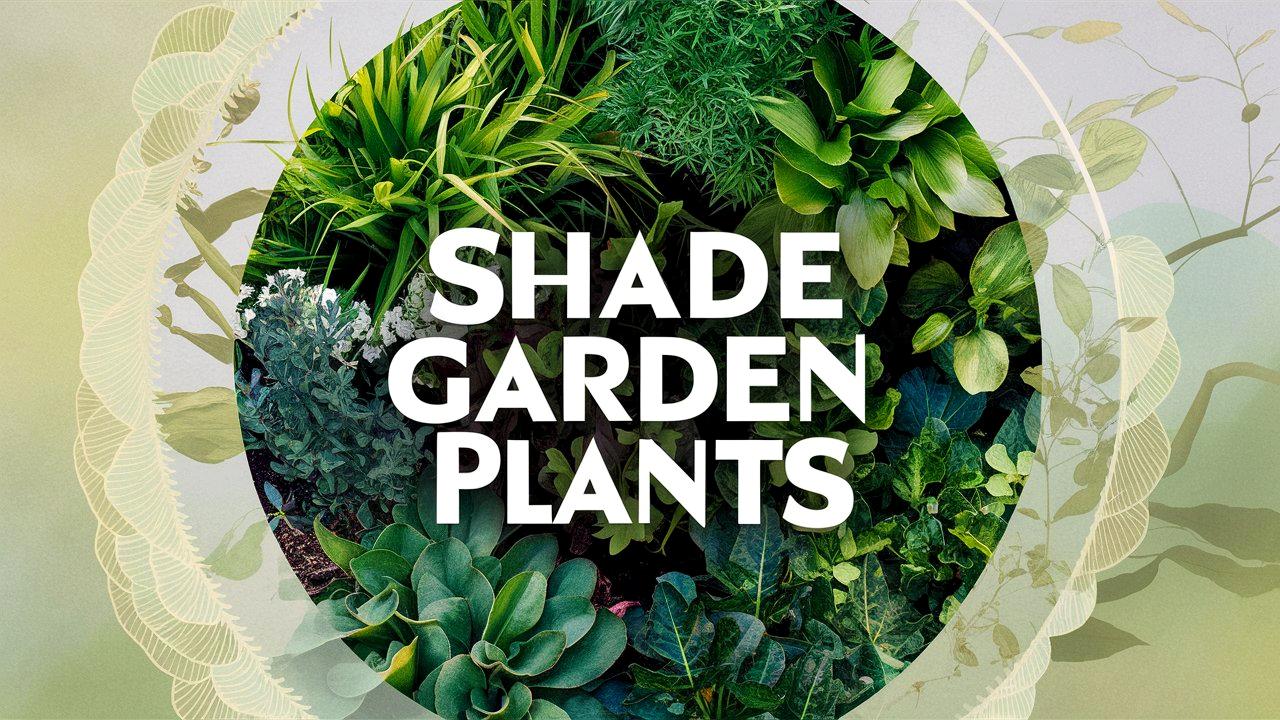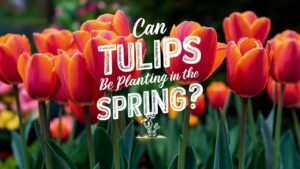Creating a thriving garden in shady areas can be an exciting challenge for any gardener. While sun-soaked garden beds may get all the glory, shade gardens offer a lush, serene alternative that’s bursting with unique plants. The key to a successful shade garden lies in selecting the right plants that thrive in low light conditions.
Whether you’re looking for vibrant flowers or captivating foliage, the options are endless. In this article, we’ll explore a variety of shade garden plants, spotlighting those that thrive with less sunlight, including both flowering plants and foliage plants.
Hardy Geraniums (Cranesbill)
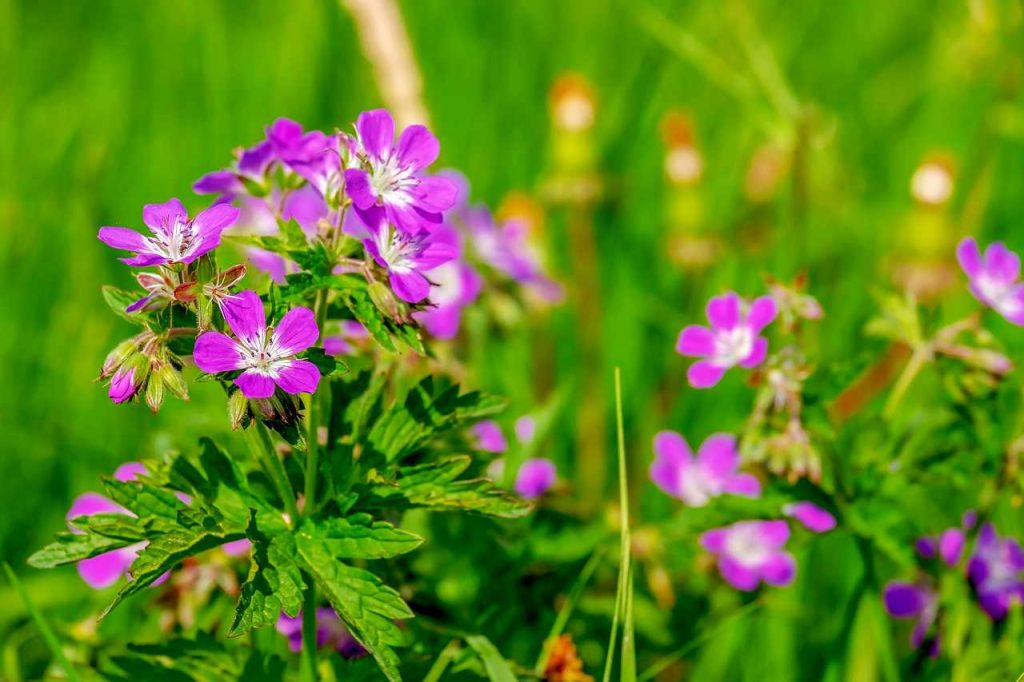
Hardy geraniums, commonly known as cranesbills, are fantastic groundcover plants that thrive in partial shade. These perennials are loved for their vibrant flowers and lush green foliage. The flowers usually bloom from late spring to early summer, and they come in shades of pink, blue, and white. With their ability to spread effectively, hardy geraniums can prevent weeds and fill in gaps between other plants. After blooming, their leaves provide excellent year-round interest, transitioning to lovely autumn hues.
Primula (Primrose)
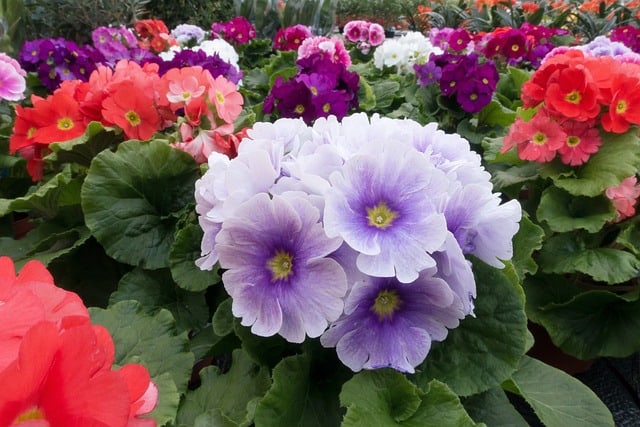
Primrose plants are iconic for brightening up shady areas with their cheerful blooms. Available in a myriad of colors from vivid yellows to gentle pastels, these perennials are particularly effective in spring gardens. They prefer moist, well-drained soil and can thrive in dappled shade. Some varieties, like the English primrose, are also known for their lovely scent, making them a delightful addition. Moreover, primulas can often naturalize, returning year after year with even more intensity.
Impatiens
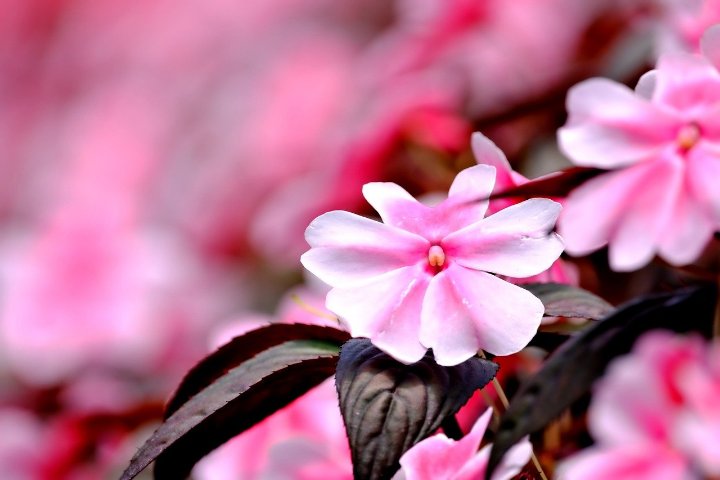
For gardeners looking to add a pop of color to their shaded areas, impatiens are a favored choice. These versatile annuals bloom through the summer, producing vibrant flowers in a range of colors, including red, pink, purple, and white. They thrive in full shade to partial shade, making them perfect for under trees or in corners of the yard that don’t see much sunlight. The lush green foliage of impatiens adds texture, and when planted in groups, they can create a living canvas of color.
Begonia
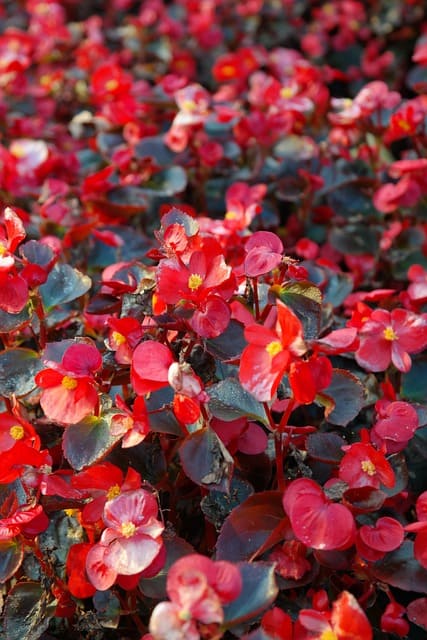
Begonias are not just beautiful; they are some of the most versatile shade plants around. With hundreds of species and hybrids, begonias offer unique leaf patterns and shapes complemented by striking flowers that can shine in shady spots. They bloom throughout summer and can handle partial to full shade, making them a go-to option for containers or garden beds shaded by larger plants. Their thick leaves also retain moisture, making them a low-maintenance option.
Fuchsia
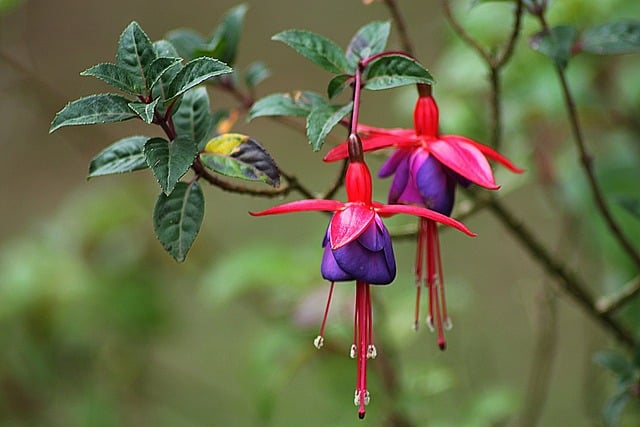
Fuchsia flowers are known for their unique teardrop shapes and vivid color combinations of purple, pink, and white. These charming plants are often used in hanging baskets or containers but can also flourish in shady garden beds. They do well in moist, well-drained soil with some protection from the hottest sun. In addition to their eye-catching blooms, fuchsias attract hummingbirds, adding even more life to your shady haven.
Astilbe
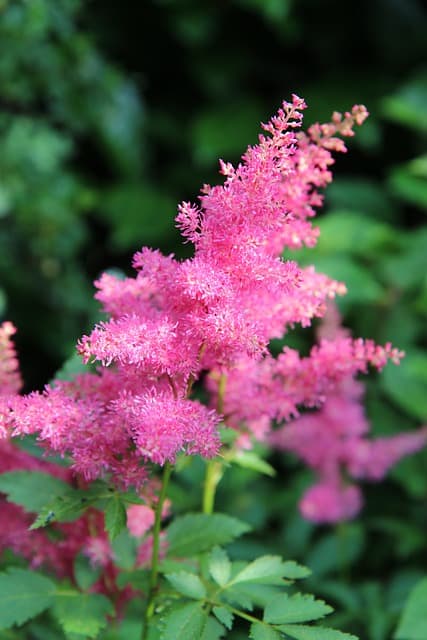
Astilbe is a must-have perennial for shade gardens, prized for its plume-like flowers that come in shades of pink, purple, and white. These plants prefer moist, fertile soil and thrive in dappled to full shade. As summer progresses, their feathery flower spikes can brighten up the shadiest corners, and their striking foliage, which often displays attractive fern-like leaves, provides texture throughout the year. Furthermore, astilbe is a magnet for pollinators, making it an excellent choice for eco-friendly gardening.
Helleborus (Hellebore)
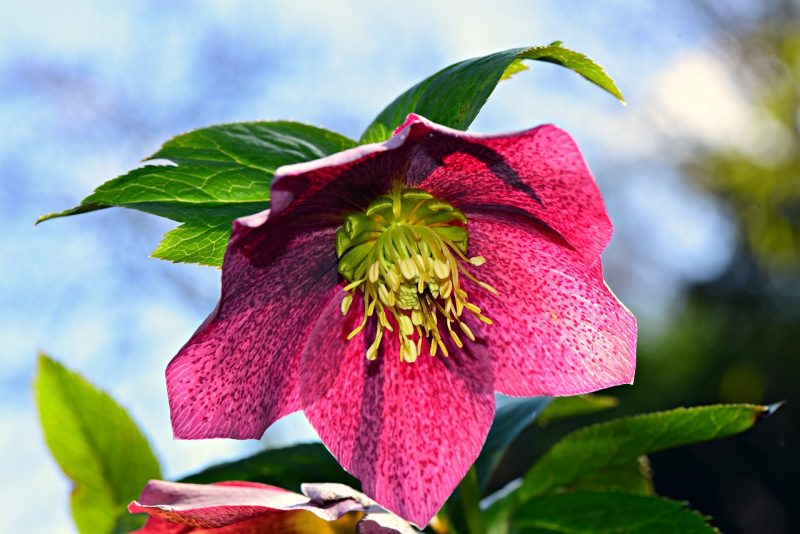
Known as the “Lenten Rose,” hellebores stand out as some of the earliest bloomers in the shade garden, often flowering as early as February or March. Their intriguing blooms often droop, providing a unique look as they emerge amidst the last remnants of winter. Hellebores come in a range of colors from subtle pastels to rich, dark shades and have glossy evergreen foliage that lasts throughout the year. They are particularly tolerant of challenging conditions, making them a great choice for gardeners looking to provide reliable blooms in the shade.
Dicentra (Bleeding Heart)
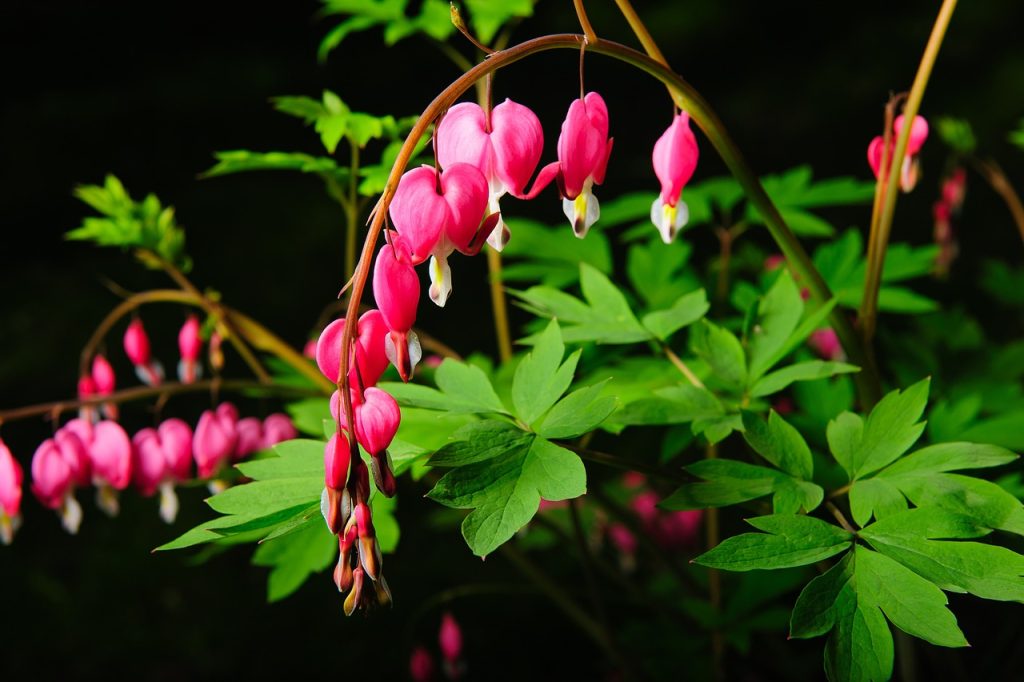
Bleeding hearts are enchanting perennial plants that grace shady gardens with their romantic, heart-shaped blooms. They bloom in spring, showcasing clusters of pendulous flowers that come in pink and white. Dicentra’s lush foliage presents a soft, feathery texture that contrasts nicely with other plants. These perennials thrive in moist, well-drained soil, and their prolific blooming makes them one of the favorites in partially shaded spots, often providing a whimsical touch to any garden.
Pulmonaria (Lungwort)
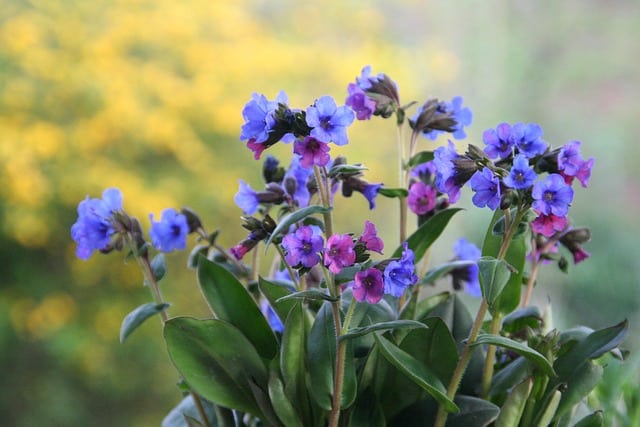
Pulmonaria, or lungwort, is a brilliant addition to shaded areas, appreciated for its striking foliage and lovely flowers. Blooming in early spring, it brings forth clusters of small, tubular flowers that can be blue, pink, or white. Its mottled leaves provide an additional decorative element, particularly in shade gardens where textures are essential. Lungwort thrives in moist, well-drained soil and is also deer-resistant, making it ideal for more challenging garden environments.
Actaea simplex (Bugbane)
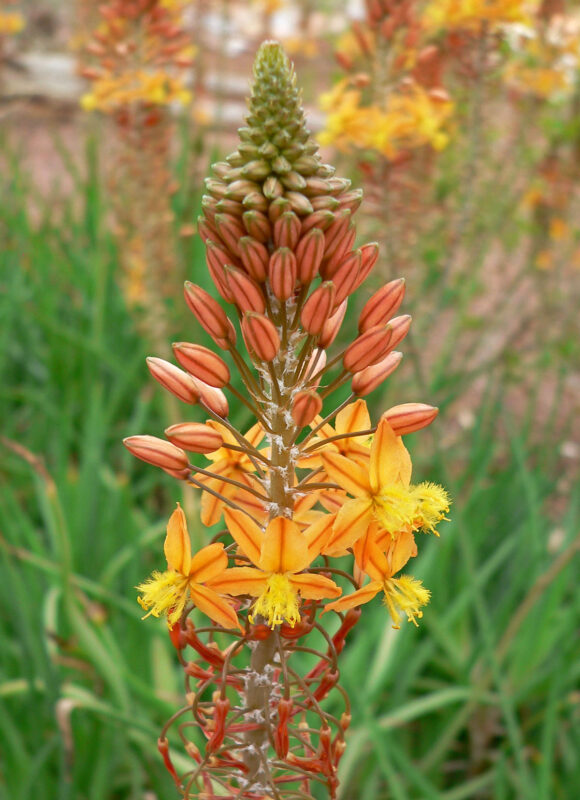
Actaea simplex, commonly known as bugbane, is a standout perennial known for its tall, airy flower spikes that can reach heights of 3 to 4 feet. Late summer or early autumn sees these plants presented with fluffy white or purple blossoms that sway gently in the breeze. Bugbane thrives in full to partial shade and prefers moist soil, making it a stunning focal point for a shaded corner. Its foliage often turns a rich burgundy in fall, offering extended seasonal interest.
Erythronium (Trout Lily)
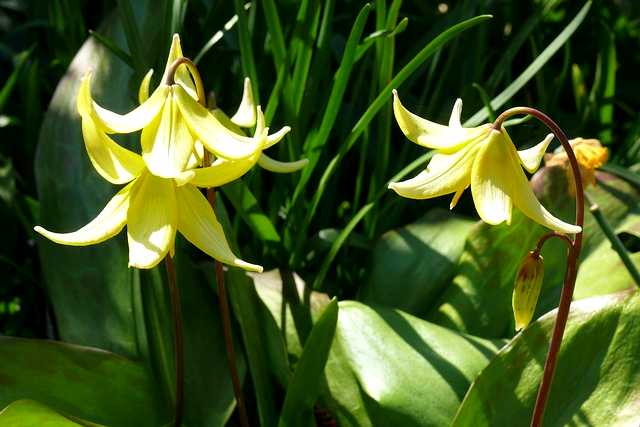
Erythronium, or trout lily, is a lovely native wildflower that thrives in shady woodlands. It features unique, arrow-shaped leaves that are beautifully marked with darker spots. Blooming in spring, the nodding yellow flowers are often likened to tulips and create a stunning carpet effect in shaded areas. These bulbs spread naturally, allowing them to establish a quaint nook in your garden over time. They flourish in rich, well-drained soil and can bring a touch of wild beauty to any shade garden.
Trillium
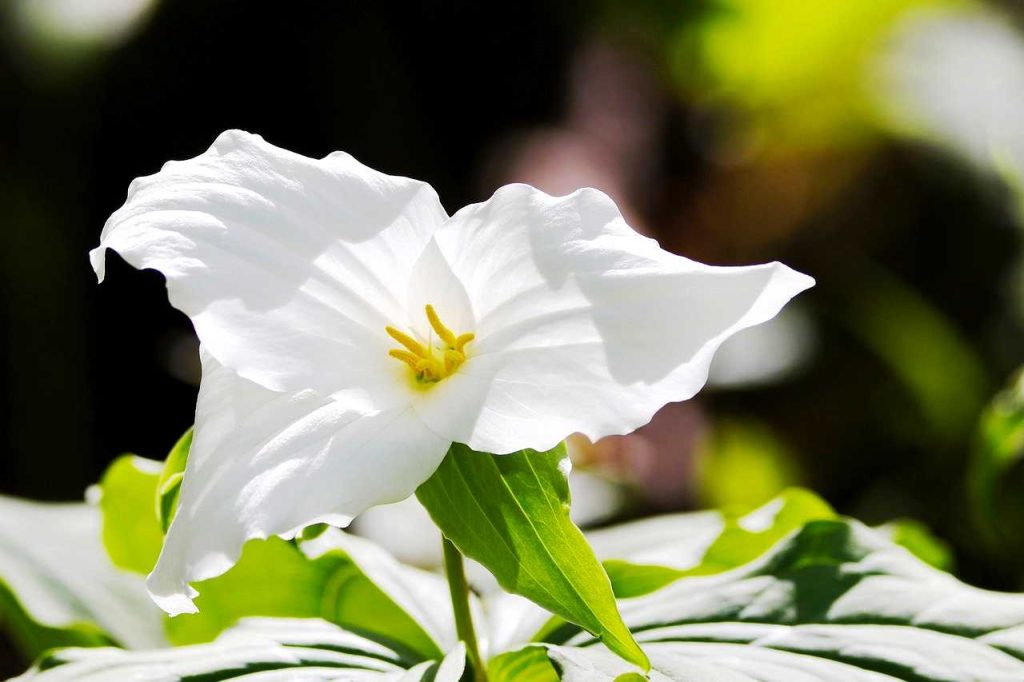
Trillium, known for its stunning, three-petal flowers, adds a lovely touch of elegance to any shade garden. The flowers can be white, pink, or purple, depending on the variety. Blooming in early spring, trillium leaves are often beautifully marked and offer an interesting texture even after flowering. They thrive in rich, moist soil and are tolerant of deep shade, making them well-suited for under trees or in woodland gardens. As a perennial, trilliums take some time to establish, but their striking beauty is well worth the wait.
Tiarella (Foam Flower)
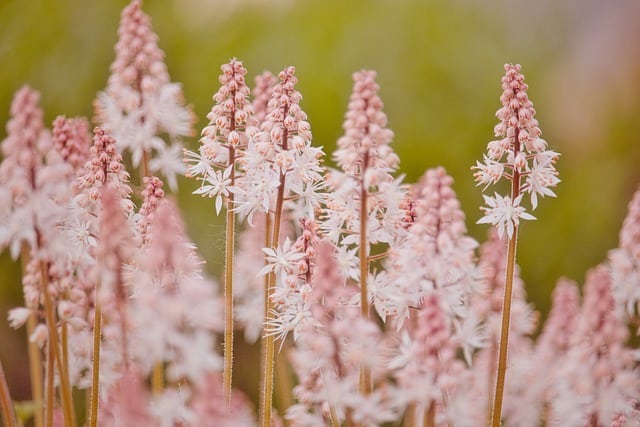
Finally, Tiarella, or foam flower, delivers a whimsically frothy effect in shade gardens with its delicate, airy flowers and striking foliage. These perennials bloom in spring, presenting lovely clusters of small white or pink flowers that create a “foamy” appearance on the top of tall stalks. Foam flowers thrive in moist, shaded conditions and their beautiful leaf patterns, often resembling that of a maple, provide additional interest throughout the year. They also attract pollinators, enriching the ecosystem of your shade garden.
Foliage Plants for Shade
While flowers are often the stars of a garden, foliage plants can create a lush, verdant backdrop that enhances the beauty of your shaded spaces. Here are some remarkable foliage plants that thrive in low light.
Coleus scutellarioides (Coleus)
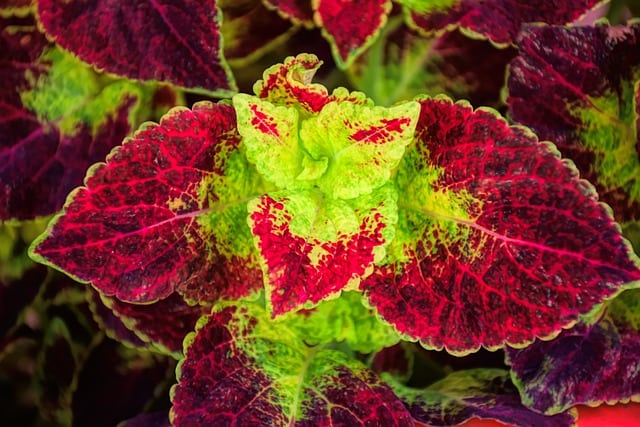
Coleus is a colorful perennial often used as an annual in gardens, particularly valued for its spectacularly varied foliage. From deep maroon to bright lime green, the leaf patterns and colors are nearly endless. Coleus thrives in shade and partial shade, making it an excellent choice for filling in gaps or softening the edges of garden beds. They prefer well-drained soil and need regular watering to maintain their vibrant colors.
Caladium (Angel Wings)
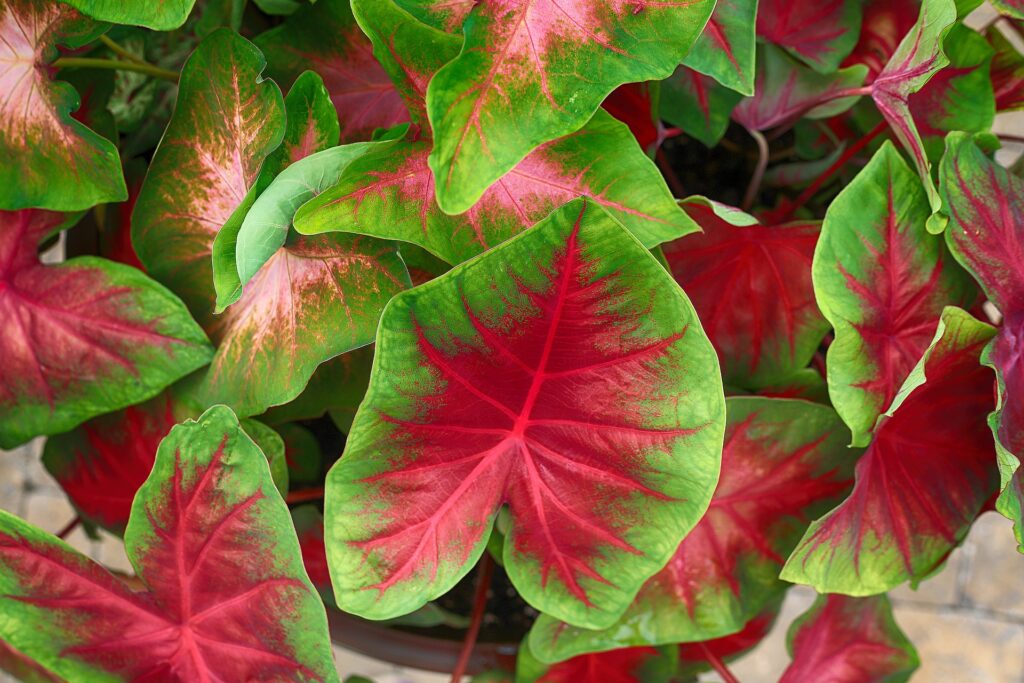
Caladiums, also known as angel wings, are prized for their bold, exotic foliage. With striking patterns and colors ranging from vibrant pinks to deep greens, they can easily brighten up a shady corner. These tropical plants thrive in well-drained, moist soil and love humidity, making them perfect for bathrooms or shaded porches. Caladiums grow from tubers and can be grown as annuals in cooler regions, bringing a touch of the tropics to any shade garden.
Hosta (Plantain Lily)
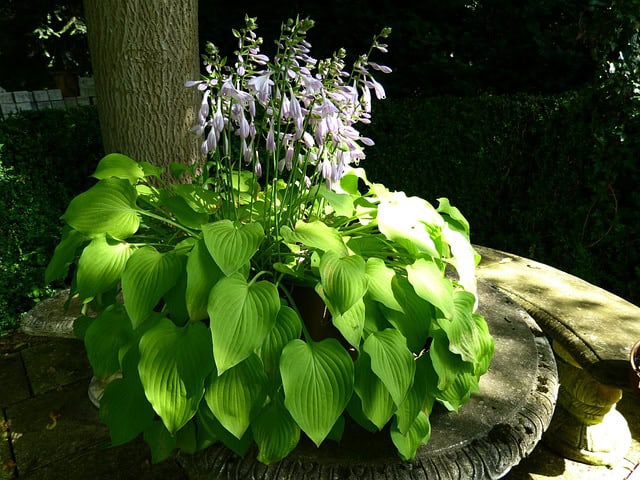
Hostas are classic shade garden plants celebrated for their stunning array of foliage. They come in numerous varieties, showcasing colors from bright gold to deep blue-green, often with contrasting edges. Hostas thrive in rich, moist soil and dappled light, making them perfect for shaded areas. Their large, architectural leaves create stunning visual impact, especially when planted in groups or alongside other shade-loving plants. Plus, in summer, many hostas produce lovely flower spikes that add interest to the garden.
Heuchera (Coral Bells)
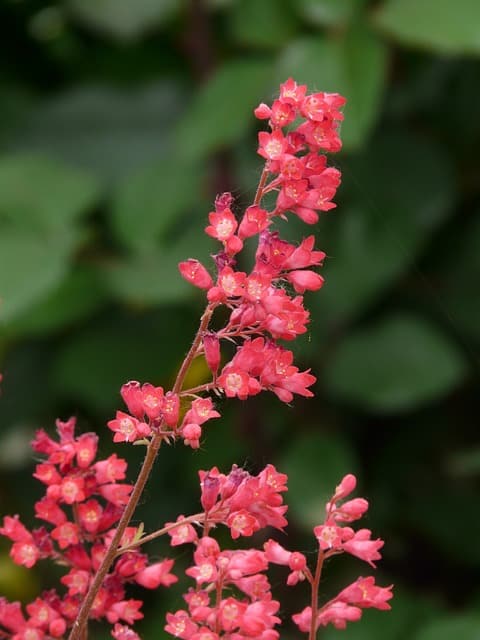
Heuchera, popularly known as coral bells, offers foliage in a wide palette of colors—from deep burgundy to bright lime green—and its leaves often exhibit gorgeous veining patterns. These adaptable perennials do well in shade and partial shade, thriving in well-drained soil. Coral bells also bloom in summer, producing delicate spikes of tiny flowers that attract hummingbirds and pollinators. Their versatility means they can be used as ground cover or added to containers for a burst of color.
Athyrium (Lady Fern)
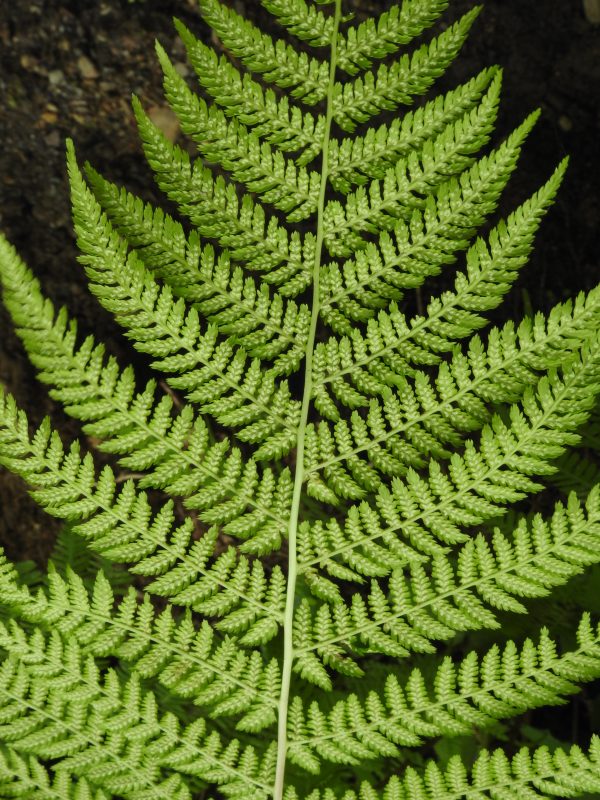
For those looking for graceful, feathery ferns, Athyrium, commonly known as lady fern, is a beautiful choice. This perennial thrives in shady, moist conditions, making it suitable for woodland gardens or shaded borders. Its bright green, delicate fronds add a soft and ethereal touch to the landscape. Lady ferns can also tolerate some dappled light but flourish best in protected settings. They’re excellent for creating lush, layered plantings alongside flowering shade plants.
Brunnera macrophylla (Siberian Bugloss)
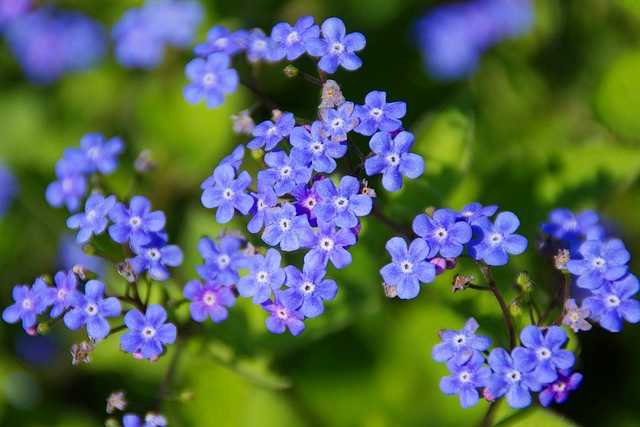
Brunnera, or Siberian bugloss, boasts charming heart-shaped leaves and stunning clusters of blue flowers that resemble baby forget-me-nots. These hardy perennials thrive in shady or partial-shaded areas, where their large leaves create striking ground cover. Brunnera prefers moist, well-drained soil and can spread gently over time, making it an excellent choice for filling in spaces. Their foliage often exhibits a lovely silver sheen, adding visual interest to the shade.
Hakonechloa macra (Hakone Grass)
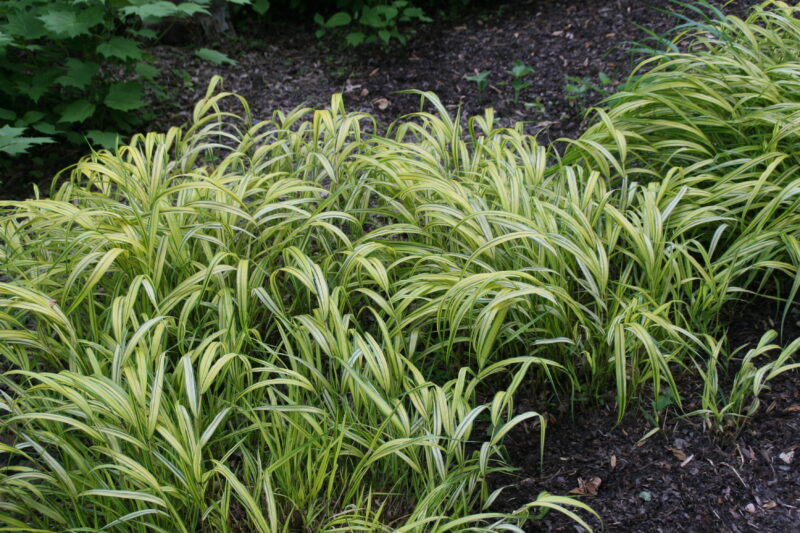
For an elegant touch in shady spots, Hakonechloa macra, commonly known as Hakone grass, is a stunning ornamental grass. With soft, arching, golden-green leaves, this grass adds movement and texture to gardens. It thrives in moist, well-drained soil and prefers partial shade, making it perfect for under trees or in shaded borders. The graceful way in which Hakone grass sways in the breeze makes it a striking choice for creating a soothing, serene garden atmosphere.
Flowering Shrubs for Shade
Adding flowering shrubs can enhance the aesthetic of a shaded garden, providing color, texture, and structure. Here’s a selection of the most resilient and attractive flowering shrubs that perform beautifully in low-light conditions.
Camellias
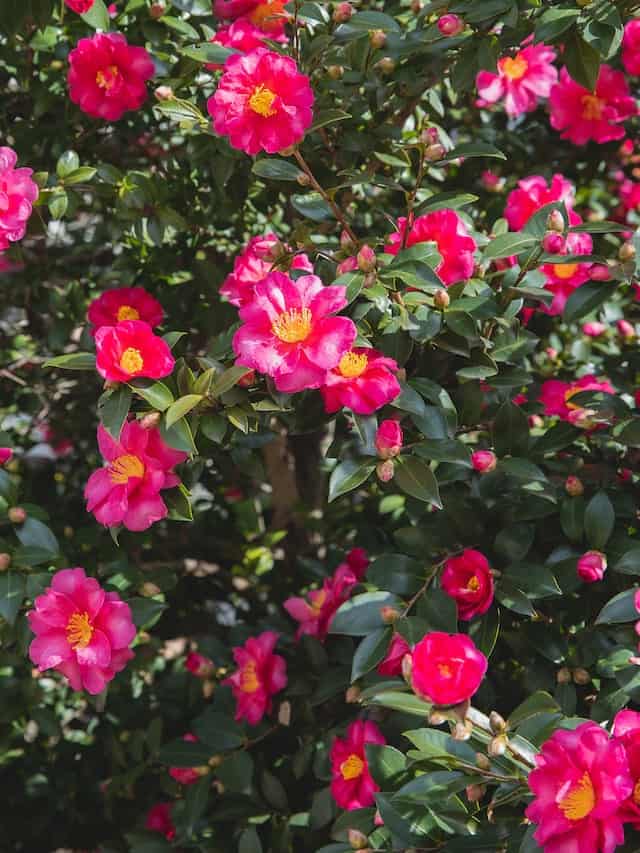
Camellias are classic flowering shrubs that thrive in shade, boasting stunning, waxy blooms that often appear in winter and early spring. Their flowers can be white, pink, or red, attracting attention when other plants are just beginning to awaken from dormancy. Camellias prefer well-drained, acidic soil and can flourish under taller trees or in partially shaded garden beds. Additionally, their glossy evergreen leaves add year-round appeal, making them a staple for many shade gardens.
Hydrangea macrophylla (Bigleaf Hydrangea)
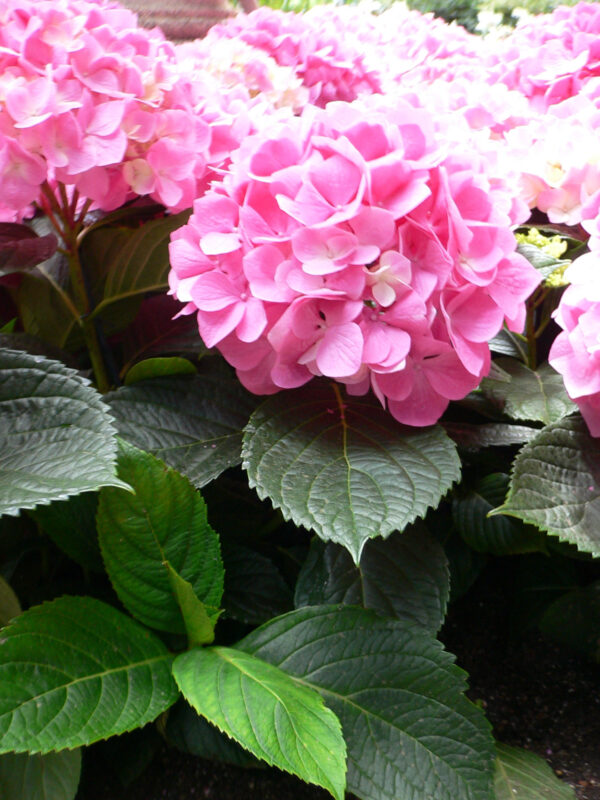
Bigleaf hydrangeas are beloved for their large, showy flower clusters that range from blue to pink, depending on soil pH. These deciduous shrubs thrive in partial shade and prefer rich, moist soil, making them ideal for shaded spots in your garden. The blooms typically appear in summer and can last well into fall. Their lush green foliage creates a lush backdrop, and many varieties have striking autumn colors. To boost flower production, ensure they receive adequate moisture during the summer.
Hydrangea quercifolia (Oak Leaf Hydrangea)
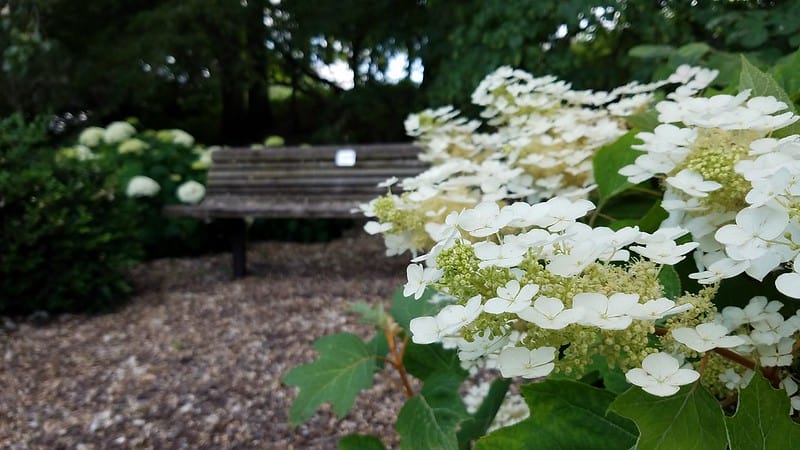
Oak leaf hydrangeas are unique for their deeply lobed leaves, reminiscent of oak foliage, which offer excellent texture even when not in bloom. The stunning white flower panicles appear in late spring and transition to beautiful shades of pink and brown as they age. Thrive in regions with some direct sun and rich, well-drained soil. Oak leaf hydrangeas also produce colorful fall foliage, deepening your garden’s visual appeal through multiple seasons.
Hydrangea arborescens (Smooth Hydrangea)
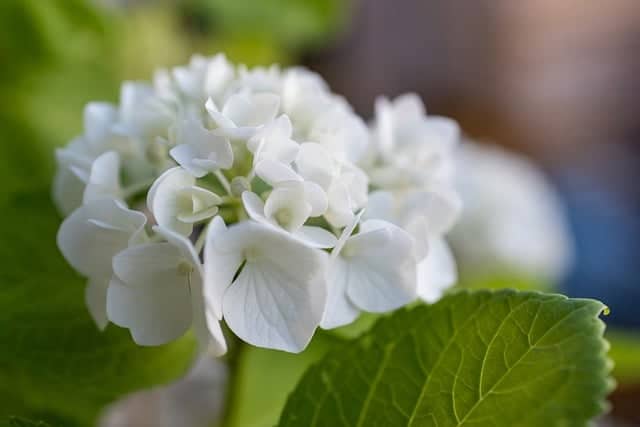
With large, round flower clusters typically appearing in late summer, smooth hydrangeas are excellent shrubs for shade gardens. Varieties like ‘Annabelle’ produce massive white blooms that often become a garden favorite. They thrive in partial to full shade and prefer consistently moist soil. When looking for reliable blooming in shady areas, smooth hydrangeas offer resilience and beauty, requiring minimal care once established.
Hydrangea paniculata (Panicle Hydrangea)

Panicle hydrangeas are known for their cone-shaped flower clusters that can bloom in early summer, continuing to showcase their beauty into fall. These adaptable shrubs can handle partial shade, making them versatile for different garden settings. Common varieties like ‘Limelight’ transform from creamy white to deep pink as they mature, bringing visual interest to your shaded areas. Panicle hydrangeas appreciate well-drained soil and are relatively low-maintenance, thriving with regular watering.
Azalea and Rhododendron
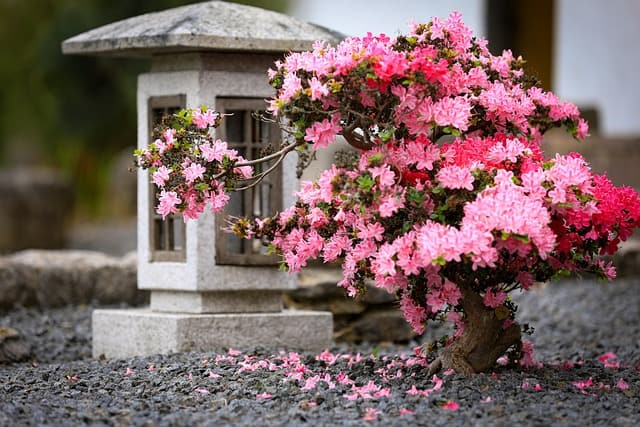
Both azaleas and rhododendrons are fantastic options for adding color and elegance to shaded spaces. These flowering shrubs are known for their vibrant blooms that vary in color, often appearing in spring. They thrive in well-drained, acidic soil and prefer partial to full shade. Azaleas generally produce smaller blooms than their rhododendron cousins, but both offer visually striking benefits for any garden design. The lush foliage of both varieties contributes significantly to your garden’s overall appearance.
Buxus (Boxwood)
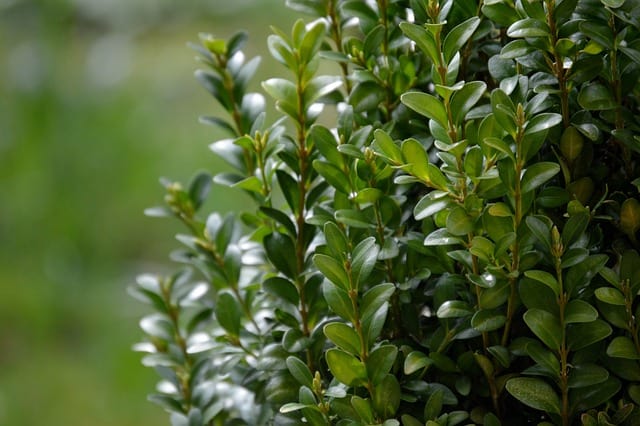
Although primarily known for their evergreen foliage, boxwoods can also flower sporadically, providing structural integrity in shaded gardens. These dense, evergreen shrubs can be pruned to any desired shape, making them ideal for formal gardens or hedging. Boxwoods thrive in well-drained soil and have good shade tolerance, although some sunlight encourages denser growth. Their subtle character blends well with flowering shrubs, enriching the overall garden design.
Trees for Shade
In addition to flowering shrubs, shade trees play a vital role in landscaping, providing height, structure, and visual appeal. Whether you’re looking for a focal point or a canopy for your shade garden, the following trees are excellent choices.
Acer palmatum (Japanese Maple)
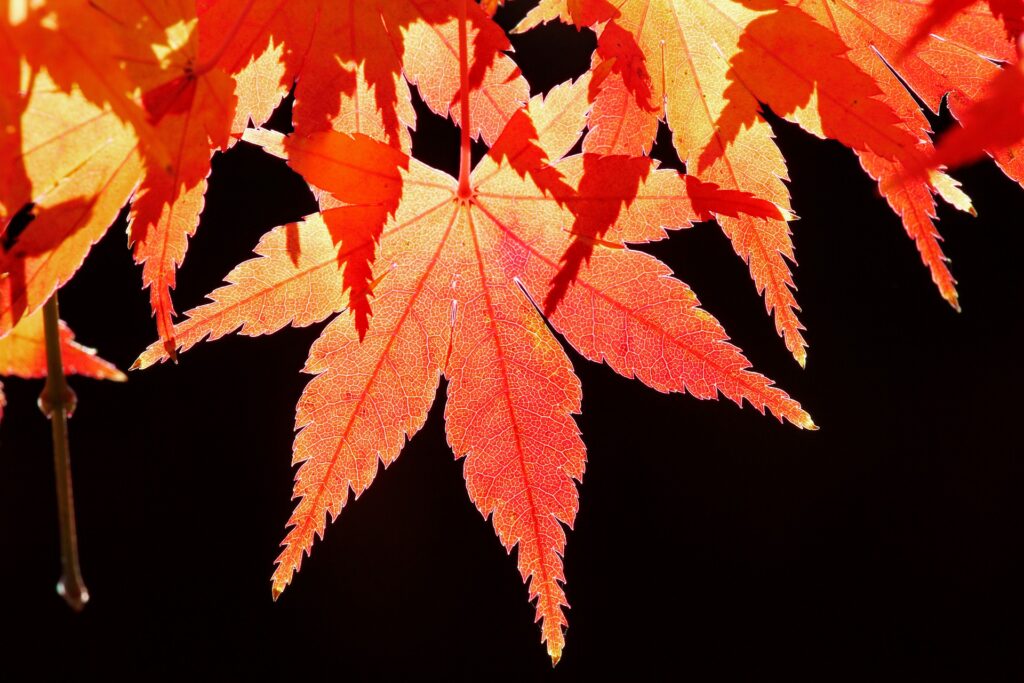
Japanese maples are cherished for their stunning foliage that changes color with the seasons. While many varieties can thrive in full sun, many also thrive in partial shade, making them adaptable to a range of garden environments. Their intricate leaf shapes can be red, green, or even variegated, adding textural depth to your garden. Japanese maples prefer well-drained soil with slightly acidic conditions and require regular watering to ensure optimal growth.
Amelanchier (Serviceberry)
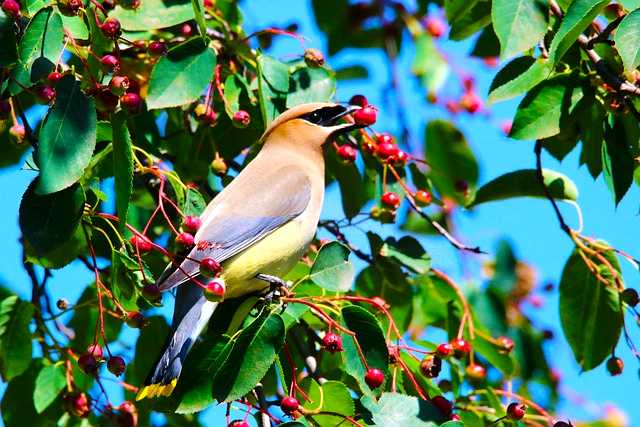
Serviceberry trees are versatile specimens that not only provide beautiful spring blossoms but also delicious berries in the summer to attract birds. These deciduous trees thrive in various light conditions, including partial shade. Their white flowers appear in early spring, followed by small, edible berries that turn from red to purple. Serviceberries also showcase vibrant fall foliage, creating year-round interest in your garden. They prefer well-drained, moist soil and can adapt to different environments.
Cornus (Dogwood)
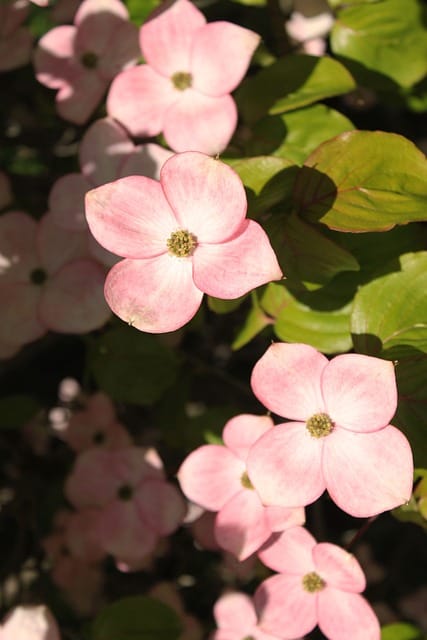
Dogwoods are beloved trees known for their stunning flower bracts that emerge in spring, creating a lovely display. Various species, like flowering dogwood (Cornus florida) and pagoda dogwood (Cornus alternifolia), thrive in partial shade and come in various sizes. The flowering dogwood features beautiful pink or white blooms, while the pagoda dogwood offers layered branches. Both types appreciate well-drained soil and regular watering, while their colorful fall foliage further enriches their year-round appeal.
Cercis (Redbud Tree)
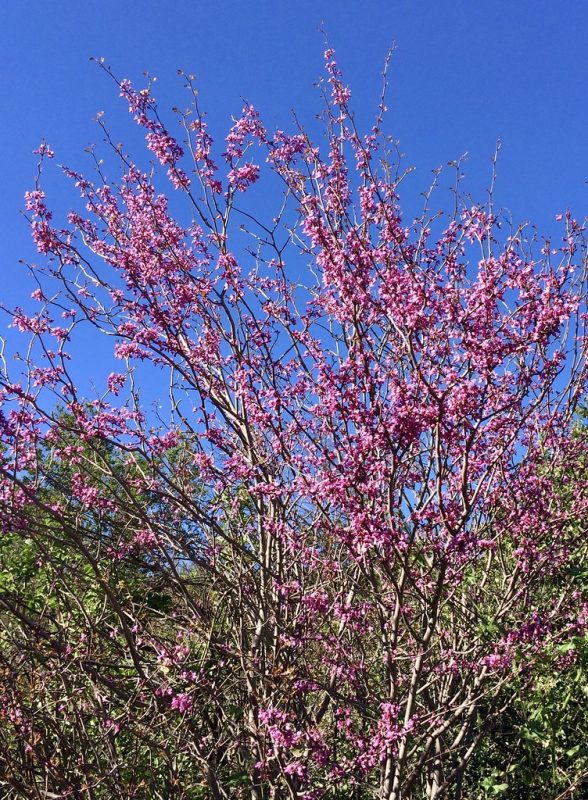
The redbud tree is a beautiful addition to shaded areas, known for its striking pink or purple flowers that bloom in early spring. These small to medium-sized trees thrive in partial shade, making them perfect for gardens with a bit of cover. The heart-shaped leaves provide lovely green cover throughout the warmer months, often turning golden yellow in fall. Redbuds are relatively easy to maintain and prefer well-drained soil, making them an ideal choice for adding charm to your garden landscape.
Hamamelis (Witch Hazel)
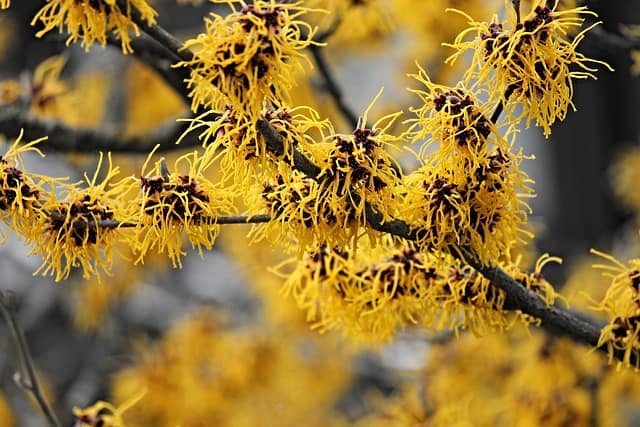
Witch hazels are unique trees known for their fragrant, spidery flowers that bloom in late winter to early spring. These deciduous trees thrive in partial shade and prefer well-drained soil. Witch hazel adds interest when many other plants are still dormant, with its unusual blooms becoming a highlight in the garden. The vibrant fall foliage and intriguing twig structures further enhance their appeal, making them a notable feature in shaded areas.
Betula (Birch)
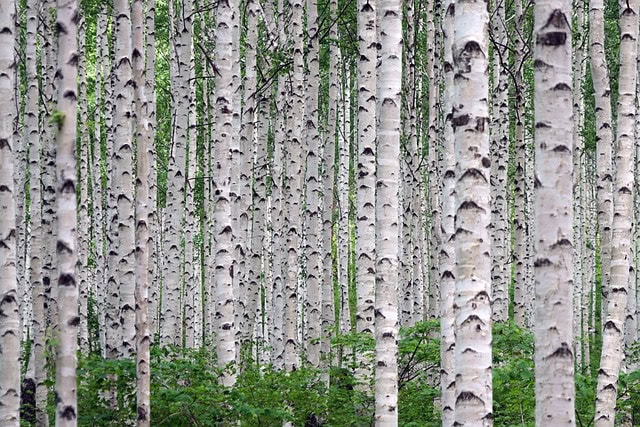
Birch trees are known for their attractive bark and graceful silhouette, making them a fantastic focal point in any garden. Many birch species adapt well to partial shade, although they generally prefer full sun. These deciduous trees can thrive in various soil types, as long as they are well-drained. Additionally, golden or yellow fall foliage adds warmth and beauty to your garden as summer gives way to fall. The graceful branches and striking bark patterns create a captivating visual effect year-round.
Wildflowers for Full Shade
These wildflowers not only adapt well to low-light conditions but often provide unique foliage, elegant blooms, and ecological benefits, such as attracting pollinators. Here’s a curated list of wildflowers that can enhance your full shade garden.
Actaea racemosa (Black Cohosh)
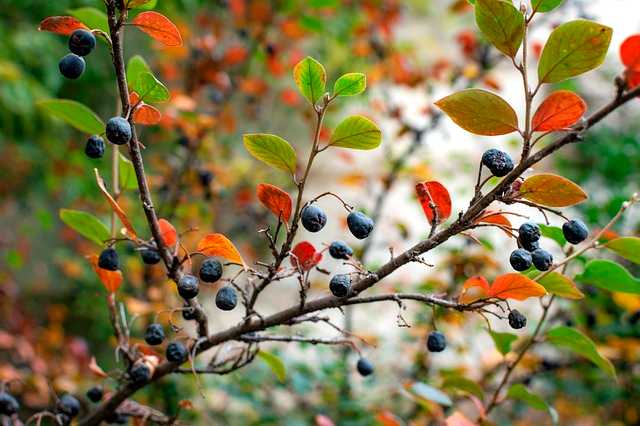
Black Cohosh is a tall, elegant perennial that produces feathery white flower spikes in late summer. Known for its striking height and dark green foliage, this plant thrives in rich, moist soil in full shade. Historically used for its medicinal properties, it’s also a beautiful addition to any shaded garden.
Anemone quinquefolia (Wood Anemone)
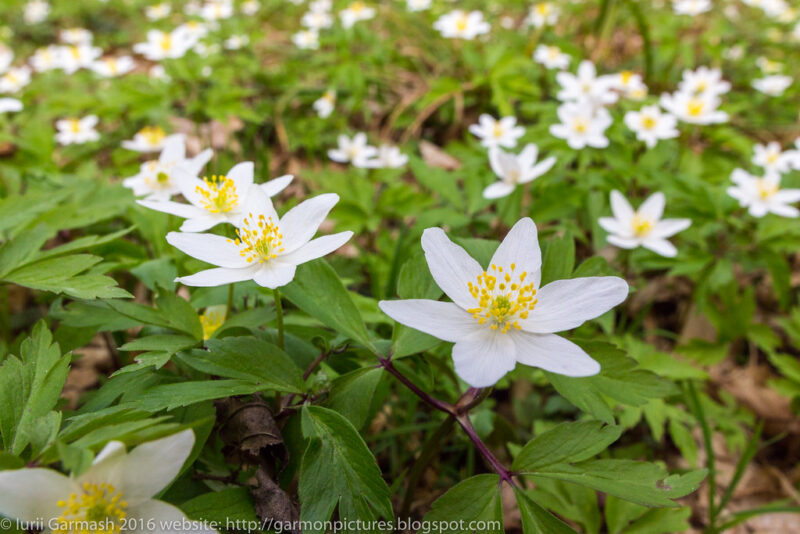
Wood Anemone, with its charming white flower clusters, is an excellent native option for shade gardens. This hardy perennial blooms in early spring and prefers moist, well-drained soil. Its delicate flowers and finely cut leaves add charm and elegance to woodland settings.
Aralia californica (Elk Clover)
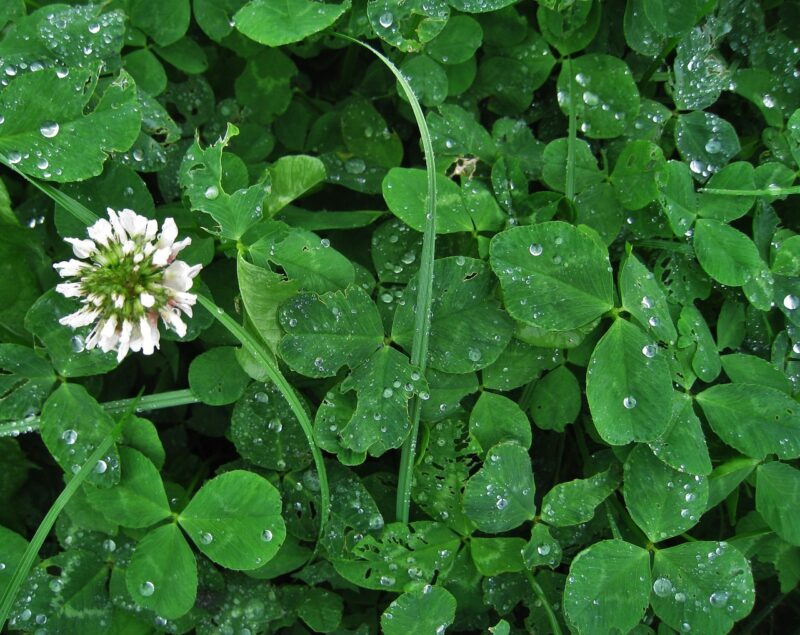
Elk Clover is a unique wildflower with large, palmate leaves and clusters of small, white flowers that bloom in summer. It thrives in moist, shaded areas and can tolerate some drought once established. Its foliage adds a tropical feel to the garden, making it a striking plant for full shade.
Arisaema triphyllum (Jack in the Pulpit)
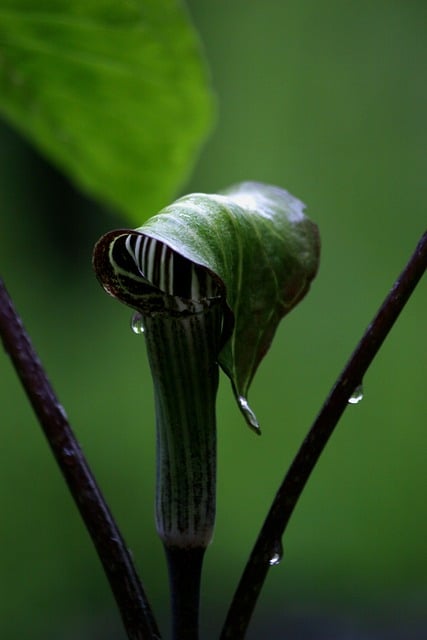
Jack in the Pulpit is a distinctive wildflower known for its unique, hooded flower structure. It prefers moist, wooded areas and shade, and it adds architectural interest to your garden. The flowers typically appear in spring, followed by attractive berries in late summer.
Asarum canadense (Canada Wild Ginger)
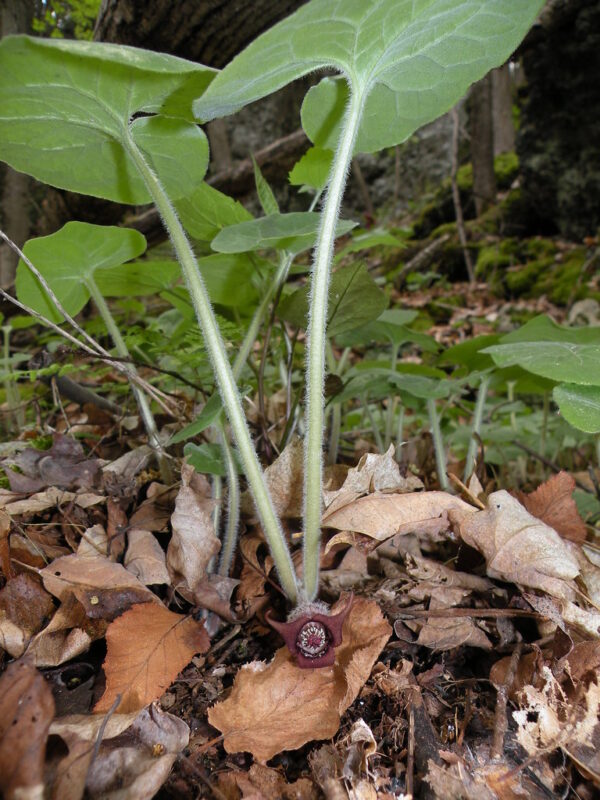
Canada Wild Ginger is an evergreen perennial that features heart-shaped leaves and small, unique flowers hidden beneath the foliage. It thrives in rich, moist soils and can tolerate dense shade. This low-growing plant is excellent for ground cover in shaded areas.
Caulophyllum thalictroides (Blue Cohosh)
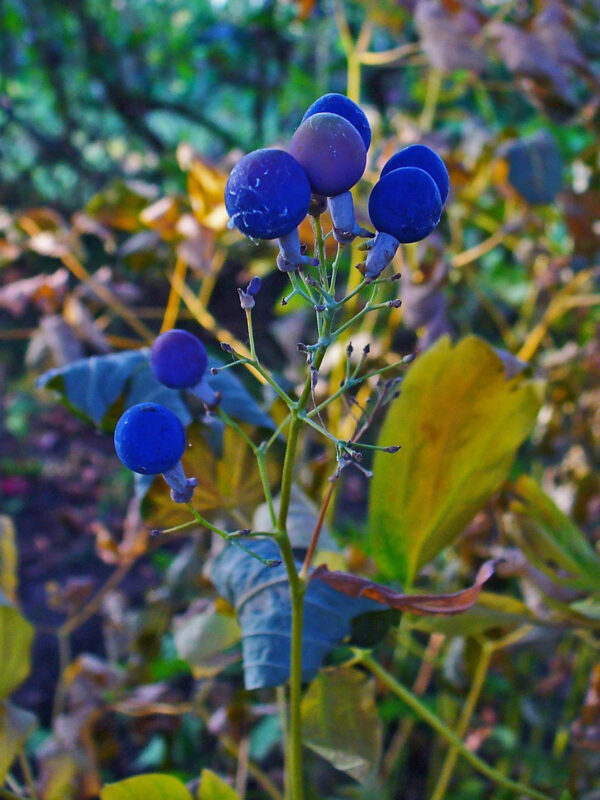
Blue Cohosh is a perennial with striking blue-green foliage that is complemented by clusters of yellow flowers in spring. This wildflower prefers rich, well-drained soils in full shade. It bears attractive seed clusters in the fall and adds year-round interest to shade gardens.
Chimaphila maculata (Spotted Wintergreen)
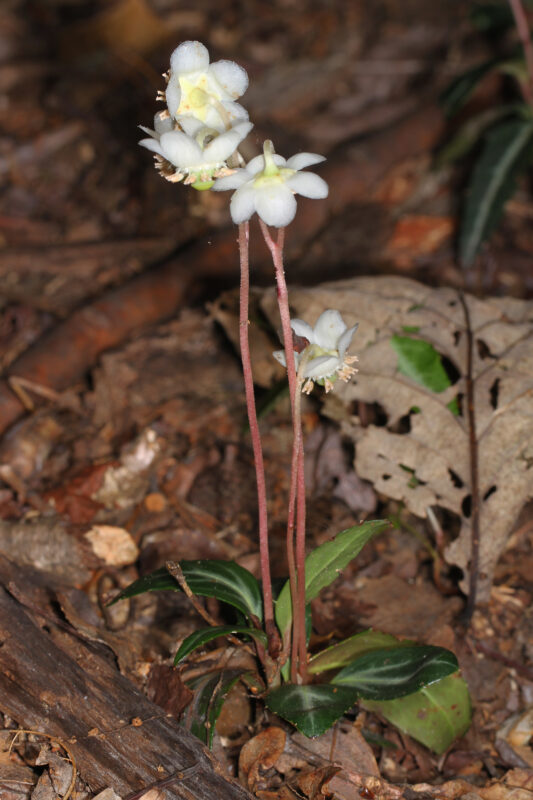
This perennial features distinctive spotted leaves and small, white, urn-shaped flowers that bloom in late spring. Spotted Wintergreen thrives in dry, acidic soils and prefers full shade, making it a lovely addition to shady woodland gardens.
Claytonia sibirica (Siberian Spring Beauty)
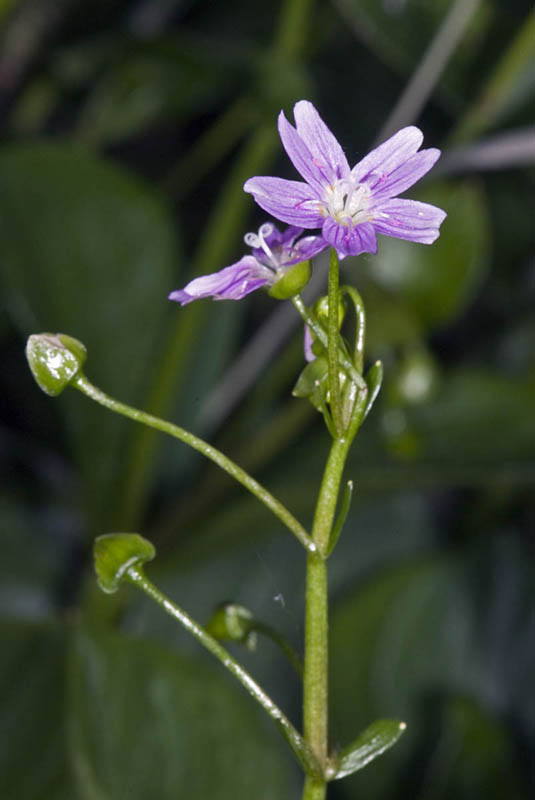
Siberian Spring Beauty produces delicate pink or white flowers that bloom early in spring. This perennial thrives in rich, moist soils and prefers partial to full shade. It makes an excellent ground cover, quickly spreading through shady areas.
Clintonia borealis (Blue Bead Lily)
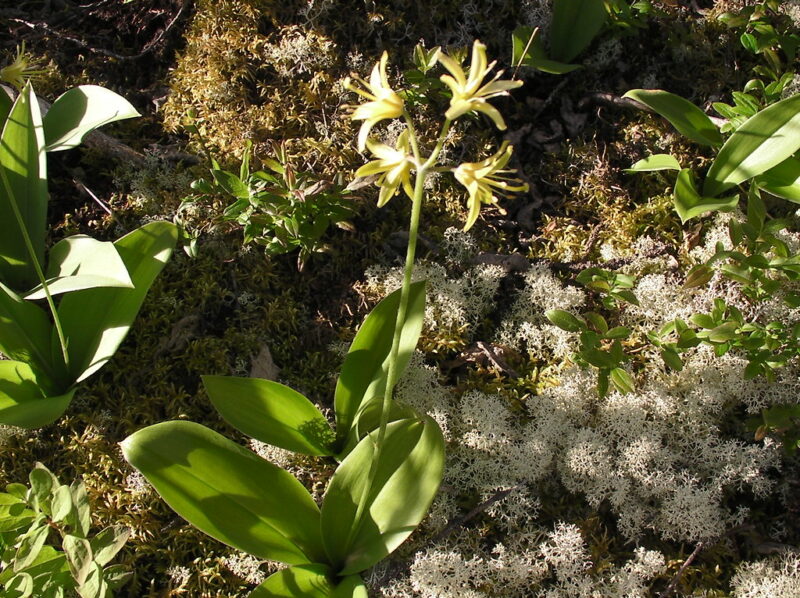
Blue Bead Lily is a beautiful woodland plant with broad green leaves and clusters of yellow flowers that give way to striking blue berries. It prefers moist, rich soils and thrives in shaded areas, providing visual interest throughout the growing season.
Clintonia uniflora (Queen Cup)
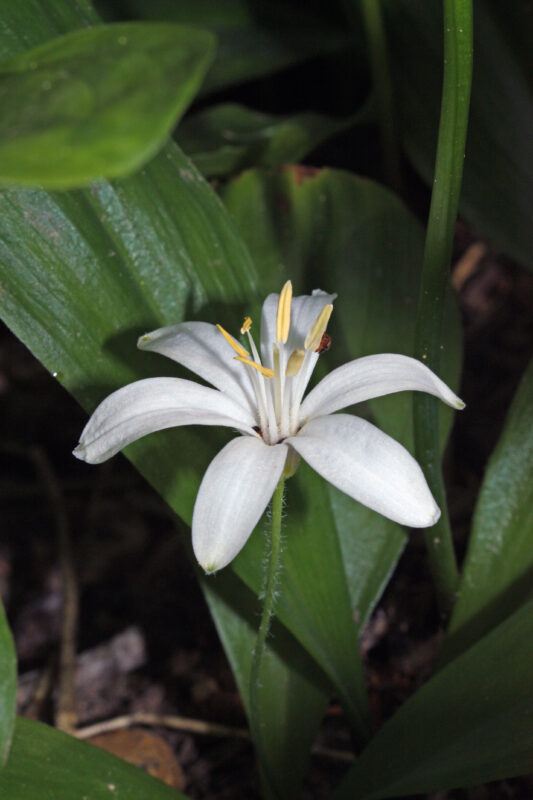
Queen Cup produces white to greenish flowers on tall stalks and is known for its stunning leaves. It prefers moist, shady environments and blooms in late spring to early summer, making it an attractive addition to any full shade garden.
Darmera peltata (Umbrella Plant)
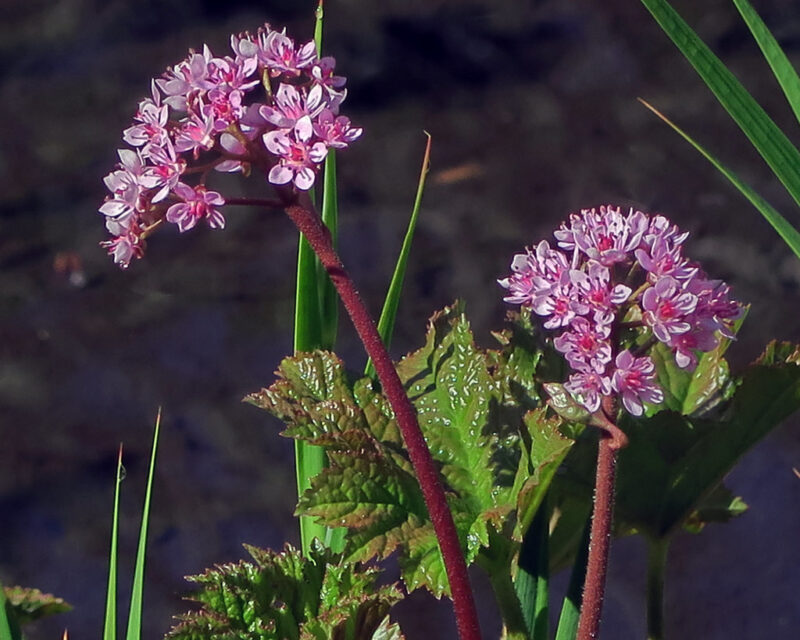
Umbrella Plant is a large perennial with broad, umbrella-like leaves and tall flower stalks. It thrives in moist, shady areas and features clusters of pink flowers in spring. Its dramatic foliage makes it a striking focal point in shaded gardens.
Dicentra canadensis (Squirrel Corn)
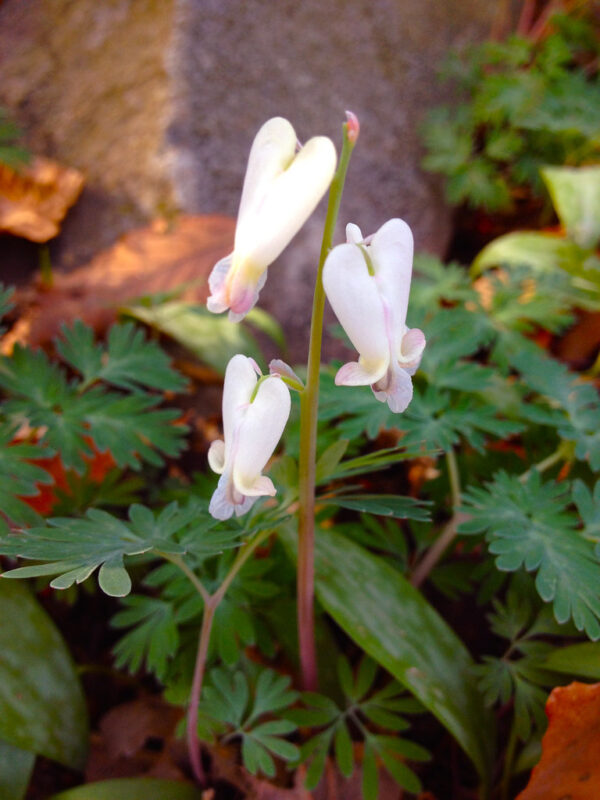
Squirrel Corn features heart-shaped leaves and delicate yellow flowers that bloom in spring. This wildflower thrives in well-drained, moist soils and prefers full shade. Its charming flowers and attractive foliage add interest to shaded areas.
Dicentra cucullaria (Dutchman’s Breeches)
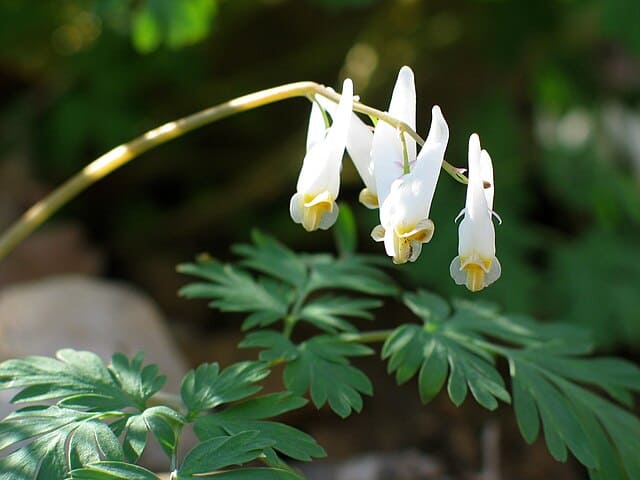
Dutchman’s Breeches is known for its distinctive flowers that resemble old-fashioned pantaloons. This perennial blooms in spring and prefers rich, well-drained soils in full shade. It is a beautiful addition to woodland gardens.
Dodecatheon meadia (Shooting Star)

Shooting Star is an elegant wildflower with unique, nodding flowers that can be white to purple. It thrives in well-drained, moist soils and prefers partial to full shade. Its distinctive flowers and attractive foliage make it a lovely choice for shaded areas.
Erythronium albidum (White Trout Lily)
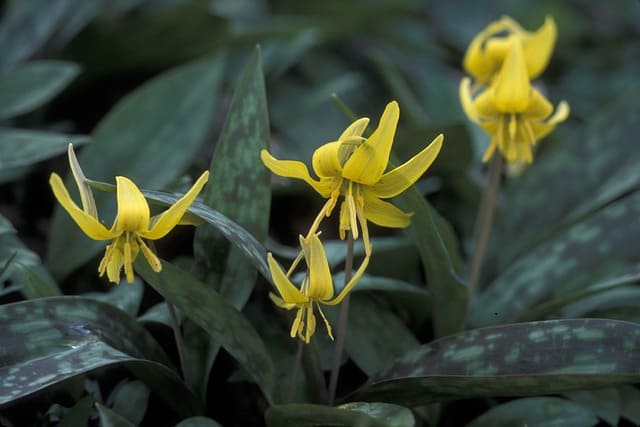
White Trout Lily features beautiful, white, nodding flowers that are often mottled with purple markings. This wildflower prefers moist soil and thrives in full shade. It is a lovely addition that adds a delicate beauty to your garden in early spring.
Erythronium americanum (Yellow Trout Lily)

Similar to its white counterpart, Yellow Trout Lily features nodding yellow flowers and lovely mottled leaves. It prefers rich, moist soils in shaded areas and is an early bloomer that helps usher in the spring season.
Erythronium umbilicatum (Dimpled Trout Lily)
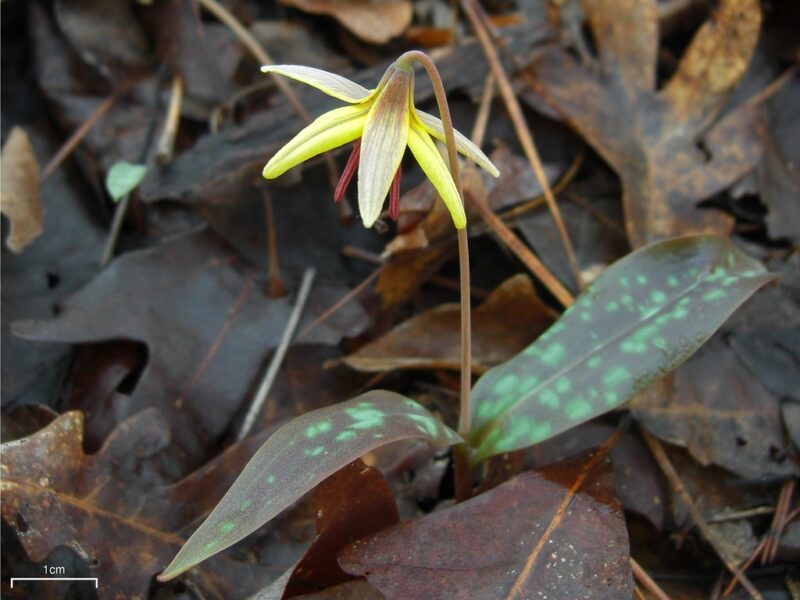
Dimpled Trout Lily showcases charming, dimpled leaves and yellow flowers that bloom in spring. It thrives in shady, moist areas and can spread through rhizomes, making it a great choice for naturalizing in woodland settings.
Eurybia divaricata (White Wood Aster)
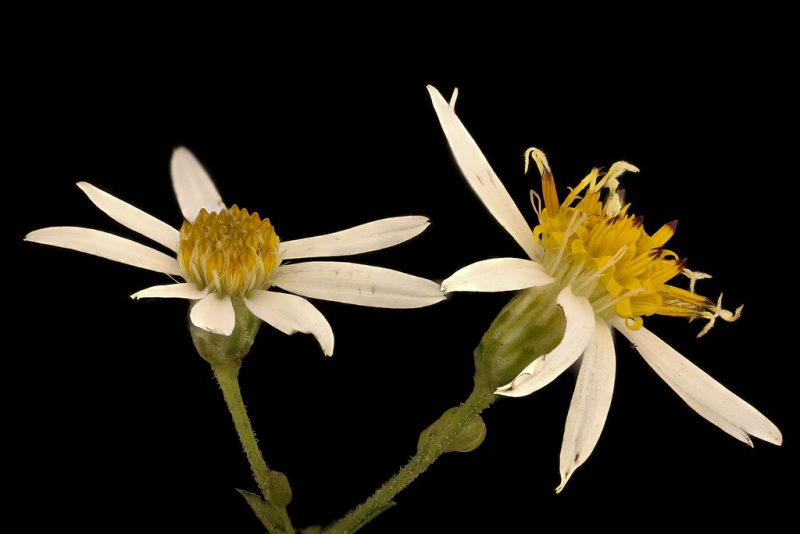
White Wood Aster is a native perennial that blooms in late summer to fall, producing delicate white flowers that attract pollinators. It thrives in rich, moist soils and provides much-needed color to shady areas later in the growing season.
Heuchera micrantha (Crevice Alumroot)
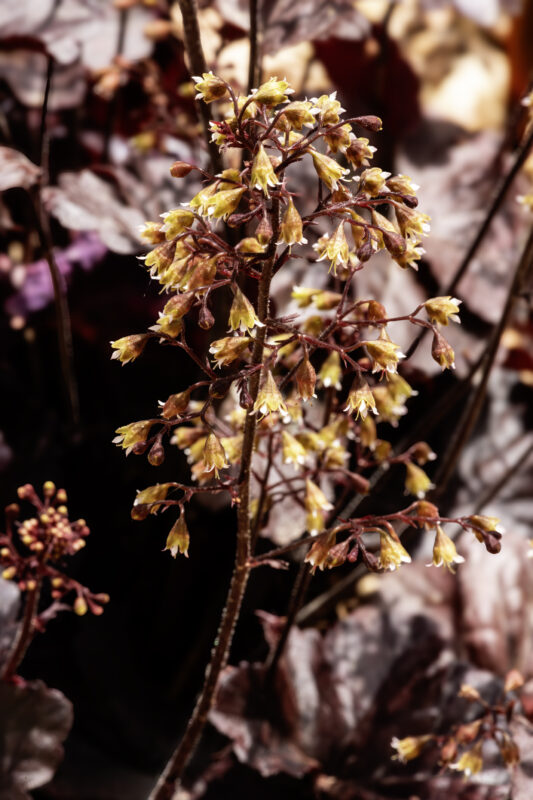
Crevice Alumroot features attractive foliage in various colors and small, delicate flowers on tall spikes. This perennial thrives in shaded, moist areas and can add vibrant color and texture to the garden year-round.
Hydrastis canadensis (Goldenseal)
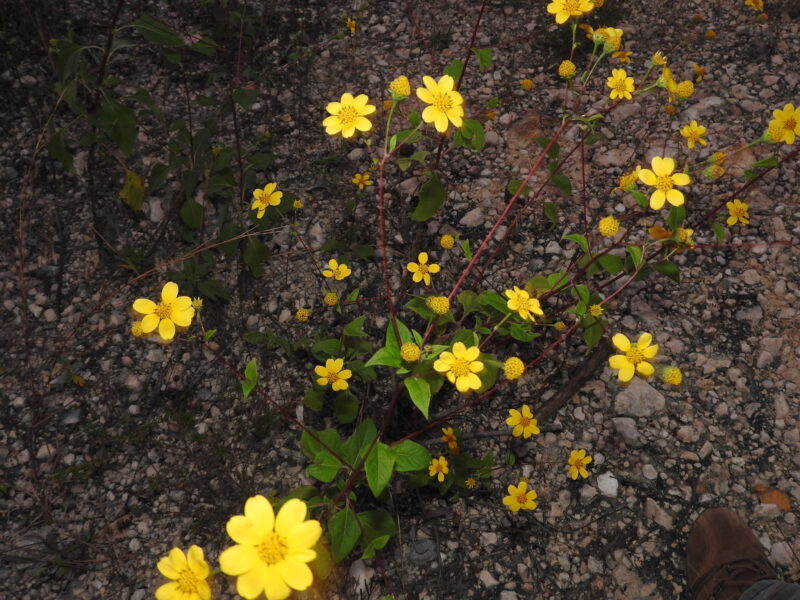
Goldenseal is a well-known medicinal plant that produces white flowers in spring and has distinctive, large green leaves. It thrives in shaded, moist environments and adds important ecological benefits as it attracts pollinators.
Impatiens capensis (Orange Jewelweed)

Orange Jewelweed is a vibrant wildflower that thrives in moist, shady areas, producing beautiful orange blooms. Its lovely flowers attract hummingbirds and pollinators, making it a lively addition to shaded gardens.
Jeffersonia diphylla (Twinleaf)
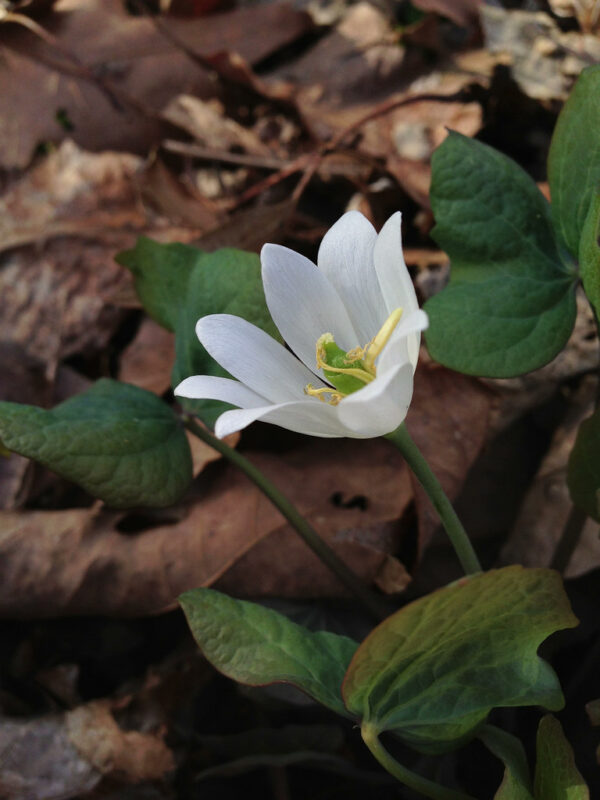
Twinleaf is a stunning woodland perennial that produces delicate white flowers in early spring. It thrives in shaded areas with rich, moist soil. Its unique leaf structure adds visual interest, and it blooms beautifully before the leaves fully unfurl.
Maianthemum canadense (Canada Mayflower)
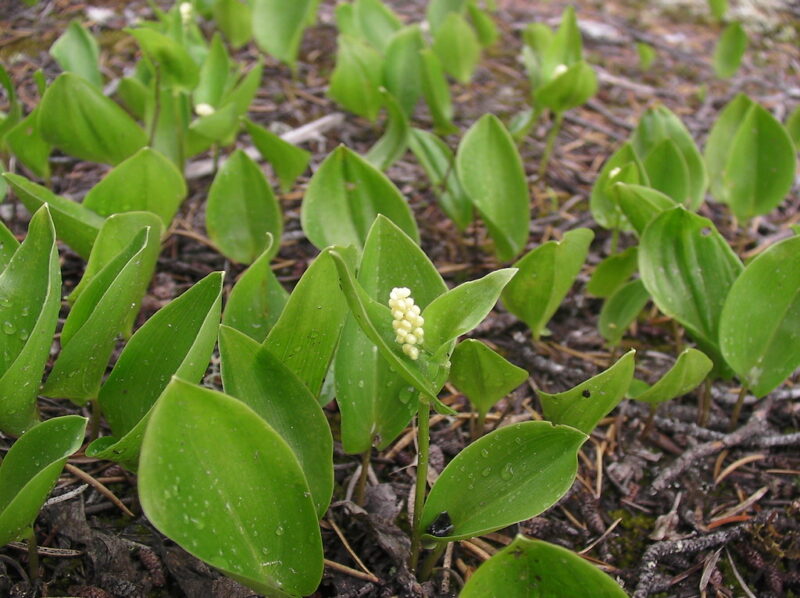
Canada Mayflower features small, fragrant white flowers that bloom in late spring to early summer. This low-growing perennial thrives in shady, moist conditions and can spread to form lovely ground cover, enhancing the beauty of shaded gardens.
Maianthemum dilatatum (False Lily Of The Valley)
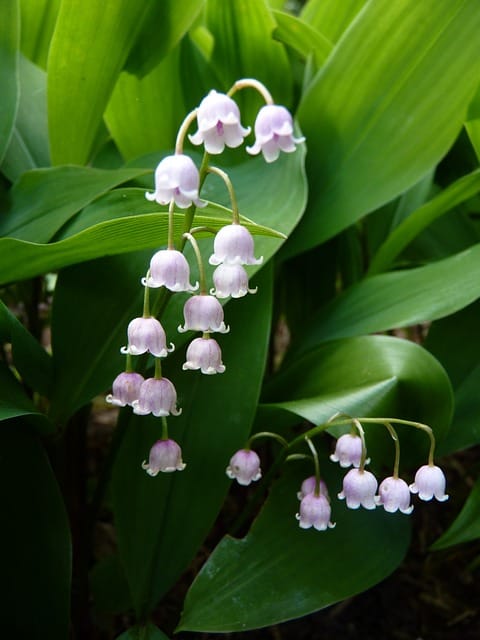
False Lily of the Valley is a lovely perennial with broad green leaves and small white flowers that cluster along arching stalks. It prefers moist, shady areas and adds an elegant touch to woodland gardens. The plant can also form a lush ground cover.
Mertensia virginica (Virginian Bluebells)
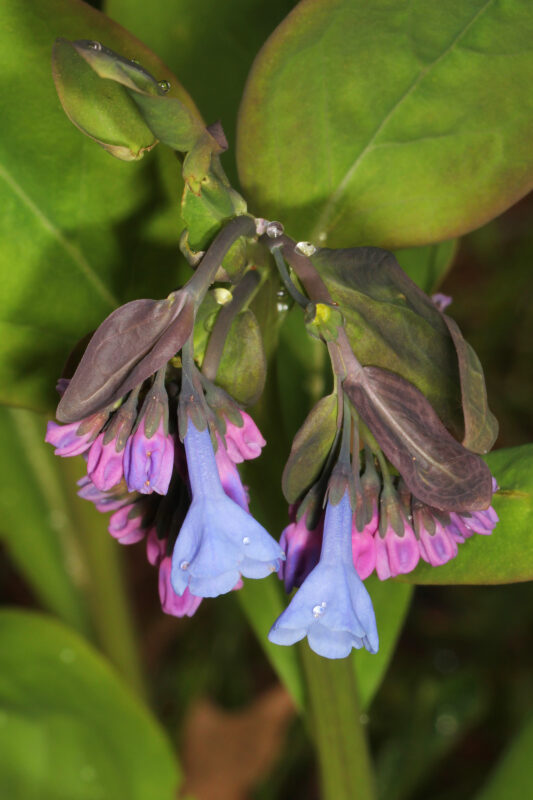
Virginian Bluebells are known for their beautiful, bell-shaped blue flowers that bloom in spring. This perennial prefers rich, moist soils in partial to full shade and creates a stunning display as the flowers nod gracefully in the breeze.
Mitchella repens (Partridge Berry)
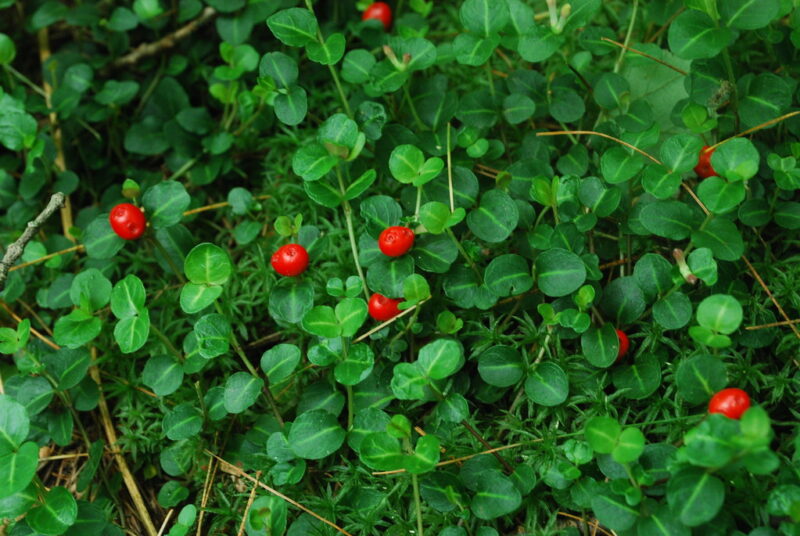
Partridge Berry is a charming, creeping evergreen perennial that produces tiny, white, tubular flowers and red berries. It thrives in shaded, moist areas and makes an excellent ground cover, particularly in woodland gardens.
Mitella diphylla (Bishop’s Cap)
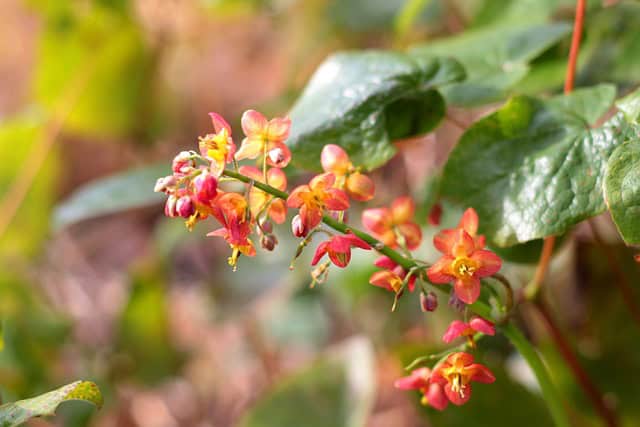
Bishop’s Cap features unique, star-shaped white flowers that bloom in spring. This perennial prefers rich, moist soils in shaded areas and produces attractive, deeply lobed leaves, making it a lovely addition to shady woodland settings.
Oxalis oregana (Redwood Sorrel)
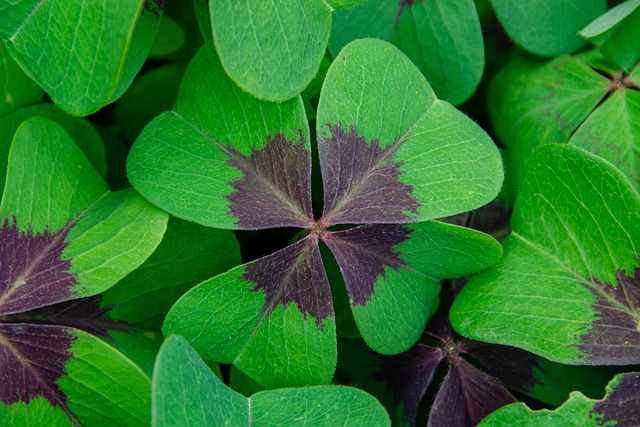
Redwood Sorrel has clover-like leaves and delicate white to pink flowers, providing a lush ground cover in shaded areas. It thrives in moist, acidic soils and can often be found in the understory of forests, adding a natural touch to woodland gardens.
Phlox stolonifera (Creeping Phlox)
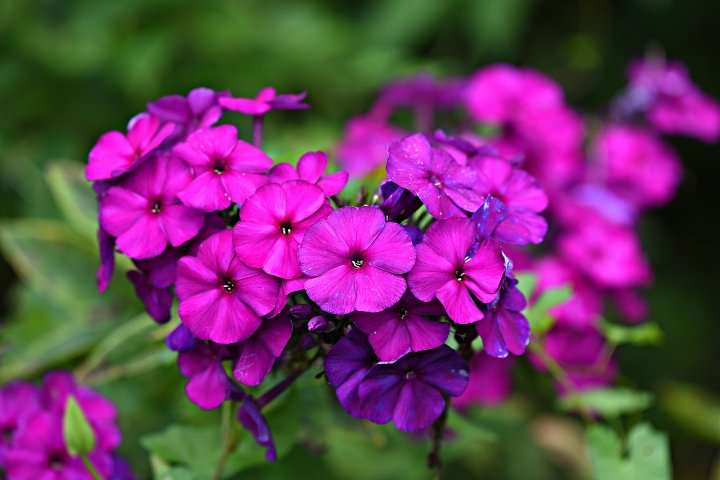
Creeping Phlox is a low-growing perennial that produces vibrant pink to lavender flowers in early spring. It thrives in moist, well-drained soils and can tolerate some shade, making it perfect for edging or ground cover in shady areas.
Podophyllum peltatum (May Apple)
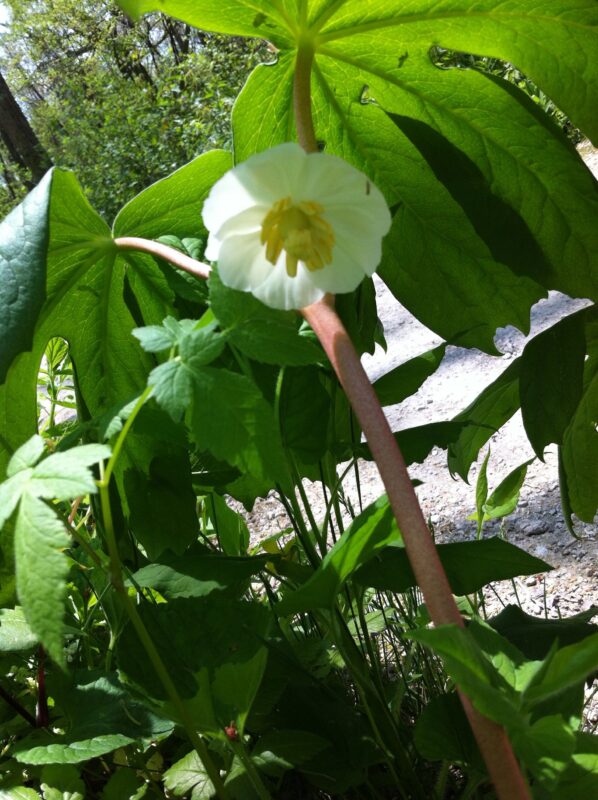
May Apple is a unique wildflower known for its broad, umbrella-like leaves and nodding white flowers. It prefers moist shade and can form dense colonies, making it a great choice for naturalizing in woodland gardens.
Polygonatum biflorum (Great Solomon’s Seal)
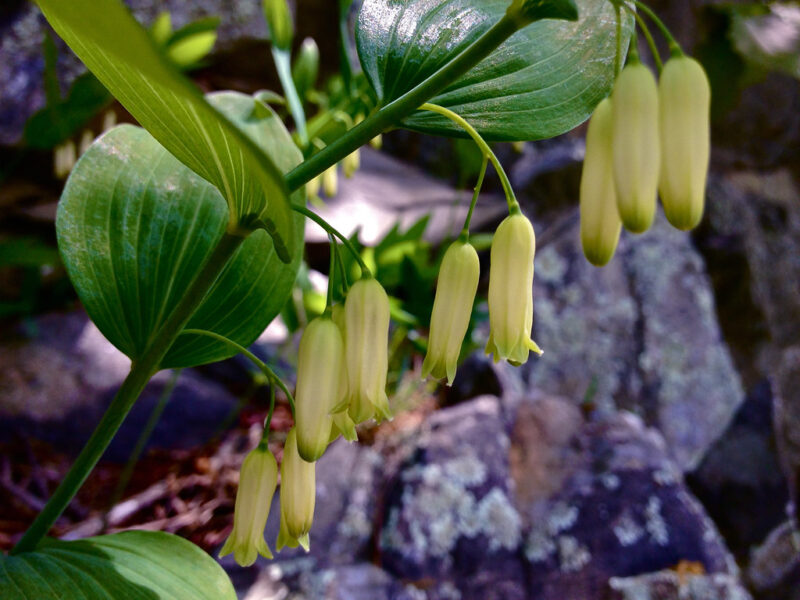
Great Solomon’s Seal is a graceful perennial with arching stems and pairs of hanging, tubular flowers. It thrives in moist, well-drained soil in partial to full shade, and its sweetly fragrant flowers appear in late spring.
Sanguinaria canadensis (Bloodroot)
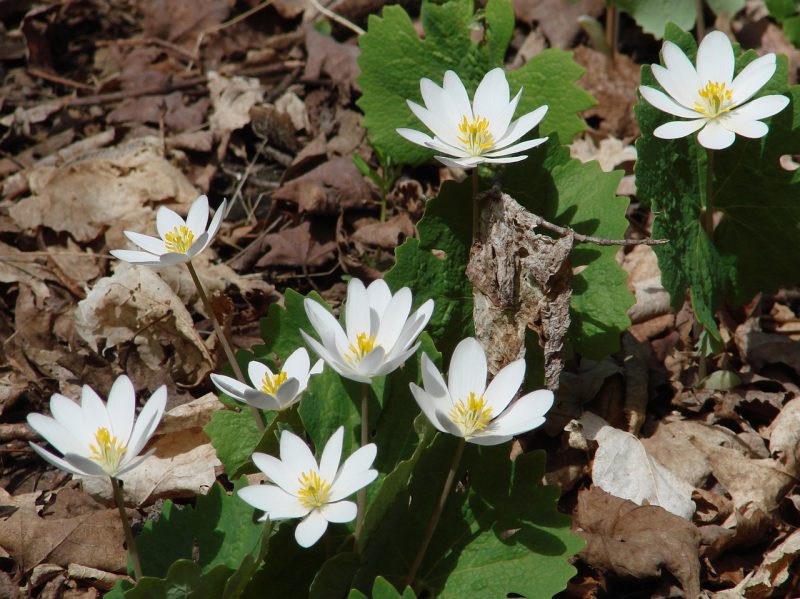
Bloodroot features delicate white flowers that bloom in early spring and are often among the first to appear. Its distinctive leaves emerge after the flowers, and it prefers rich, moist soils in shaded areas.
Shortia galacifolia (Oconee Bells)
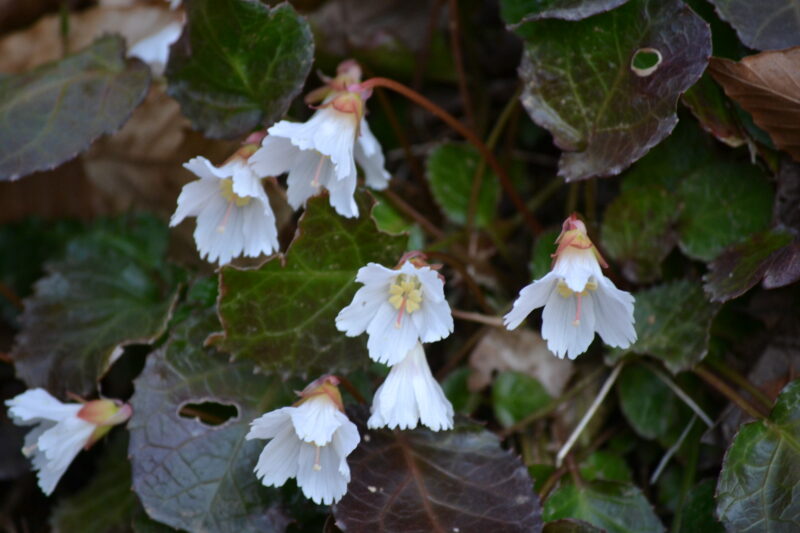
Oconee Bells are known for their striking, bell-shaped white flowers and glossy green leaves. They thrive in rich, moist soils in shaded areas and are an excellent choice for adding beauty to woodland gardens.
Spigelia marilandica (Indian Pink)
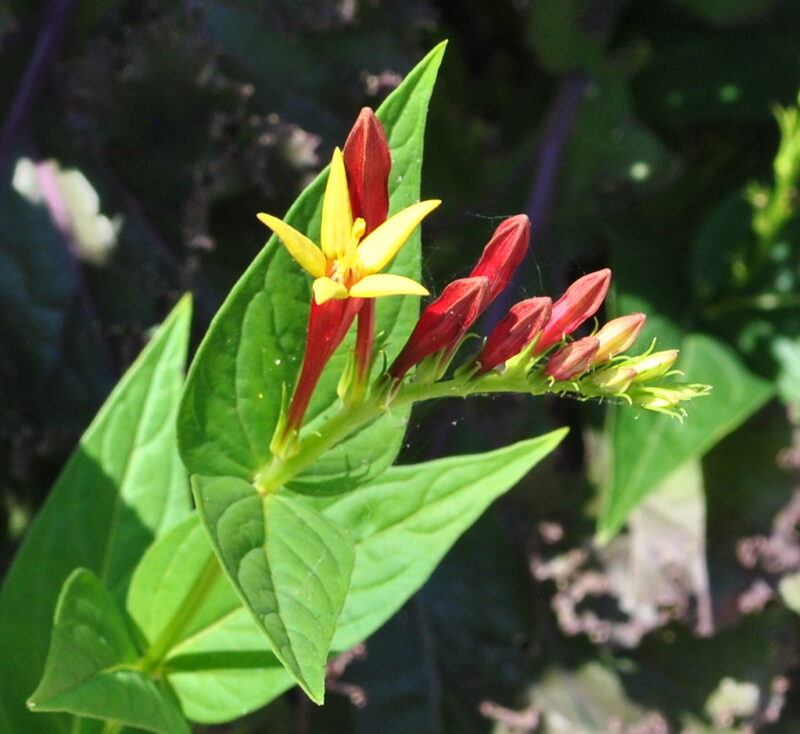
Indian Pink is a stunning perennial with tubular red flowers that attract pollinators. It prefers moist, shady areas and provides vibrant color in late spring to early summer. Its unique flower shape adds interest to garden beds.
Stylophorum diphyllum (Celandine Poppy)
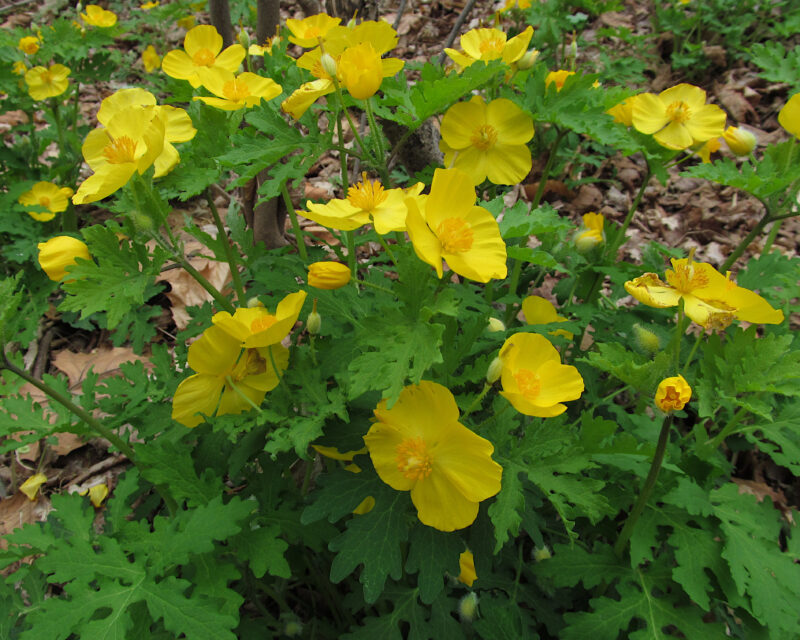
Celandine Poppy is an attractive perennial with yellow flowers and lobed leaves. This wildflower thrives in rich, moist soils in full shade and showcases its blooms in spring through early summer.
Tellima grandiflora (Fringe Cups)
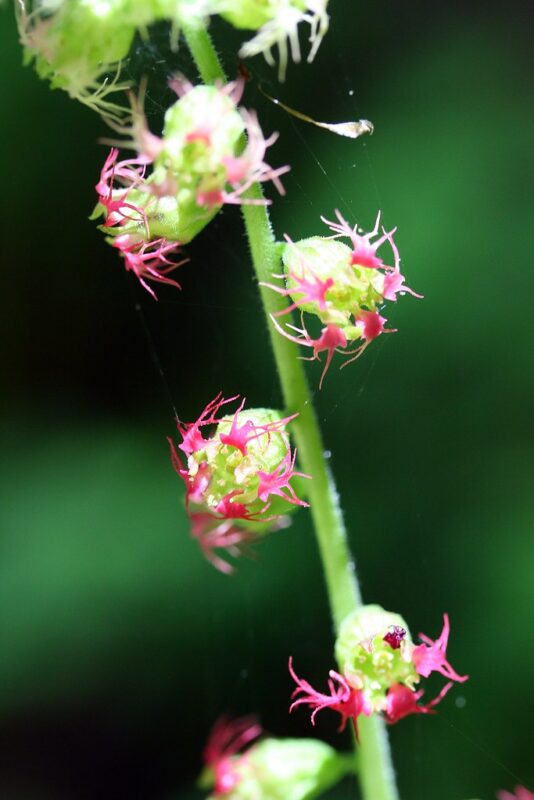
Fringe Cups is a perennial with beautiful, scalloped leaves and clusters of small, bell-shaped flowers that can appear in shades of green, cream, or pink. It thrives in rich, shaded environments and is great for adding texture to garden beds.
Tiarella cordifolia (Foam Flower)

Foam Flower features attractive, deeply lobed leaves and tall spikes of tiny white flowers that bloom in spring. It thrives in moist, wooded areas and offers great ground cover for shaded gardens.
Tradescantia virginiana (Virginia Spiderwort)
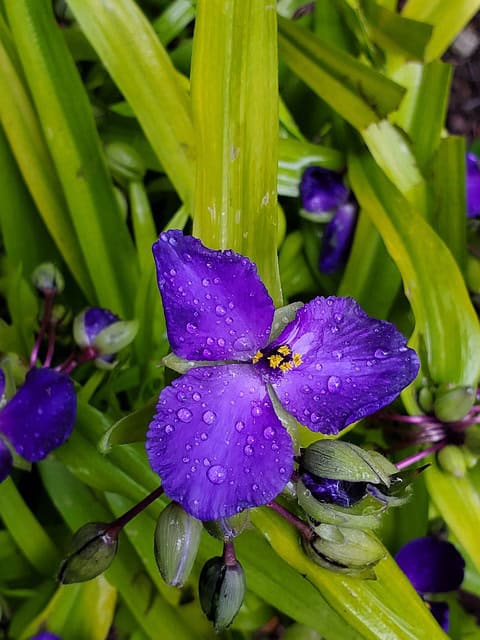
Virginia Spiderwort produces elegant, three-petaled flowers that can vary in color from blue to purple. This perennial thrives in partially sunny to shaded areas, blooming from late spring to early summer and providing ongoing interest.
Trillium erectum (Red Trillium)
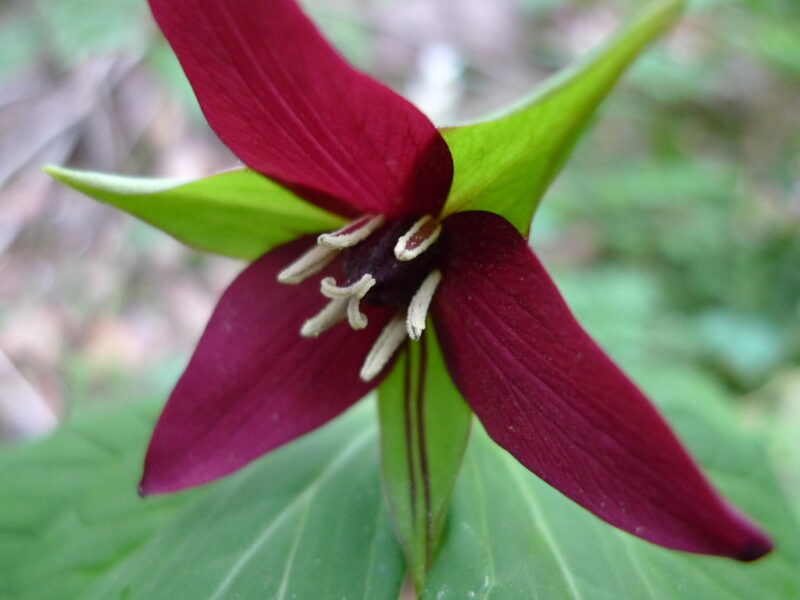
Red Trillium showcases deep red petals and is often found in rich, shady woodlands. It prefers moist, well-drained soils and is a stunning addition to shaded garden areas during spring flowering..
Trillium ovatum (Western Trillium)
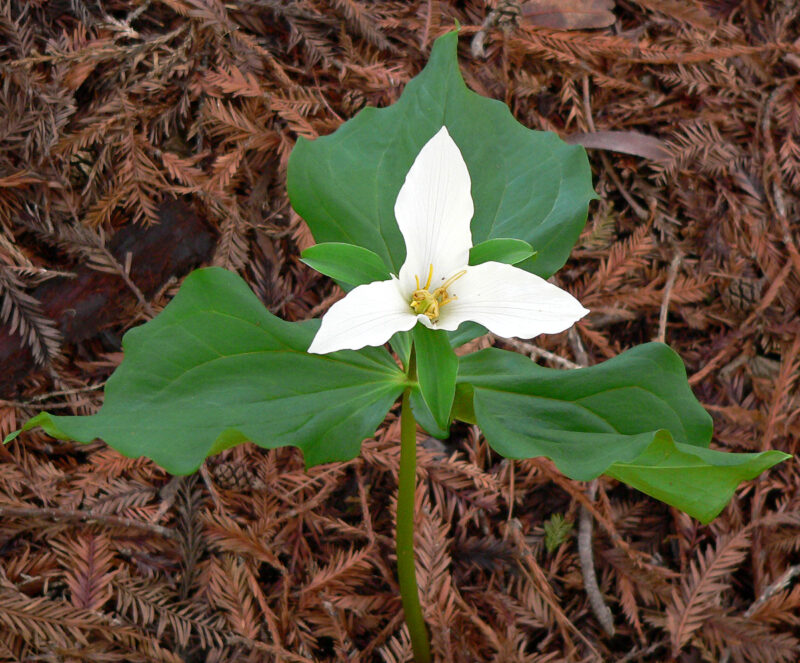
Western Trillium features beautiful, white flowers that may turn pink with age. It is well-adapted to moist, shaded environments and produces striking flowers in spring, making it a treasured addition to shaded gardens.
Uvularia grandiflora (Bellwort)
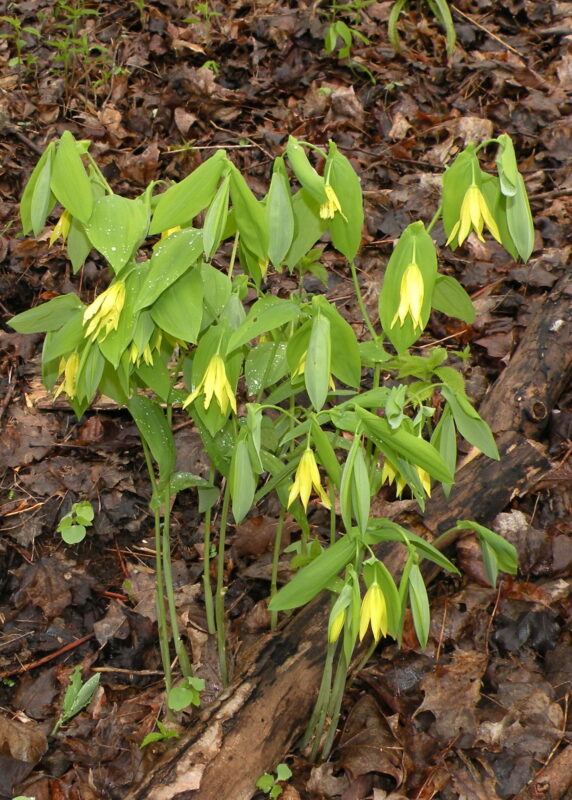
Bellwort features elegant, bell-shaped yellow flowers that hang gracefully from arching stems. It thrives in shaded, moist areas and makes an excellent addition to woodland gardens with its delicate appearance.
Vancouveria hexandra (White Inside-Out-Flower)
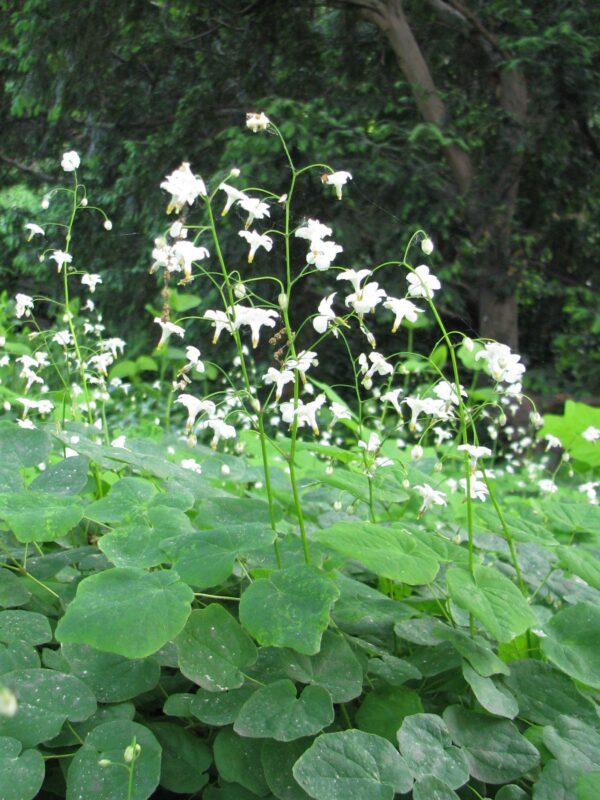
White Inside-Out-Flower is a unique perennial with small white flowers and attractive foliage. It thrives in shaded, moist conditions and adds interest to woodland gardens with its distinctive blooming habits.
Viola sempervirens (Evergreen Violet)
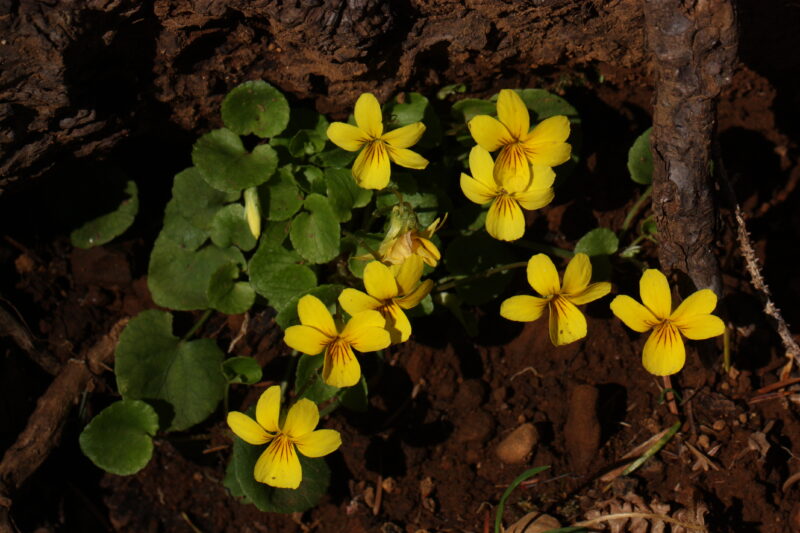
Evergreen Violet is a charming perennial that features heart-shaped leaves and fragrant purple flowers. It thrives in shaded areas and is known for its evergreen foliage, providing beauty throughout the year.
Viola rostrata (Long Spurred Violet)
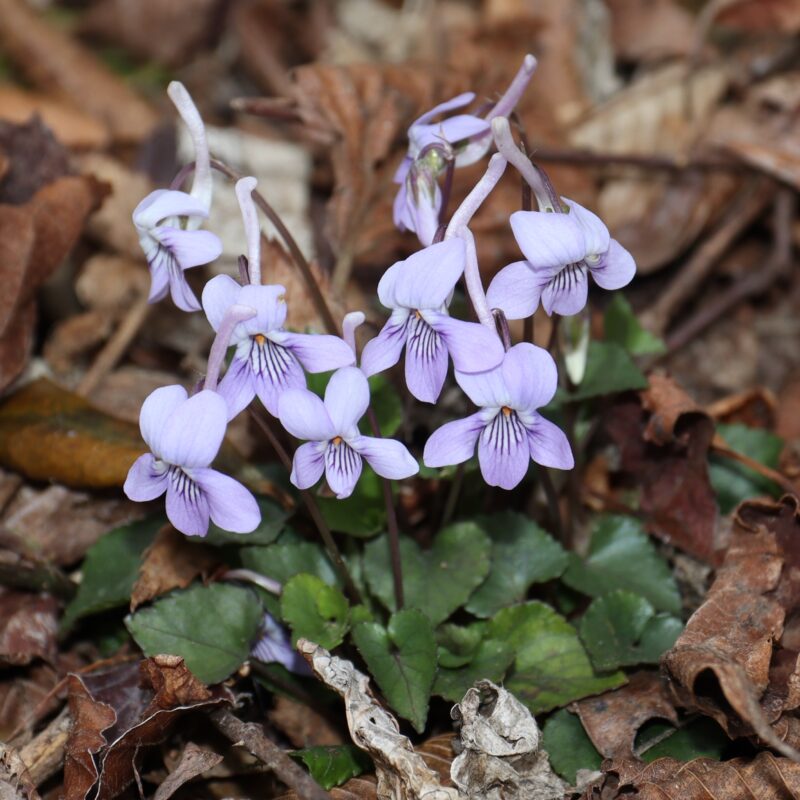
Long Spurred Violet produces lovely purple flowers with long spurs and thrives in shaded, moist areas. It is an excellent addition to woodland gardens, blooming in spring and adding beauty to the landscape.


